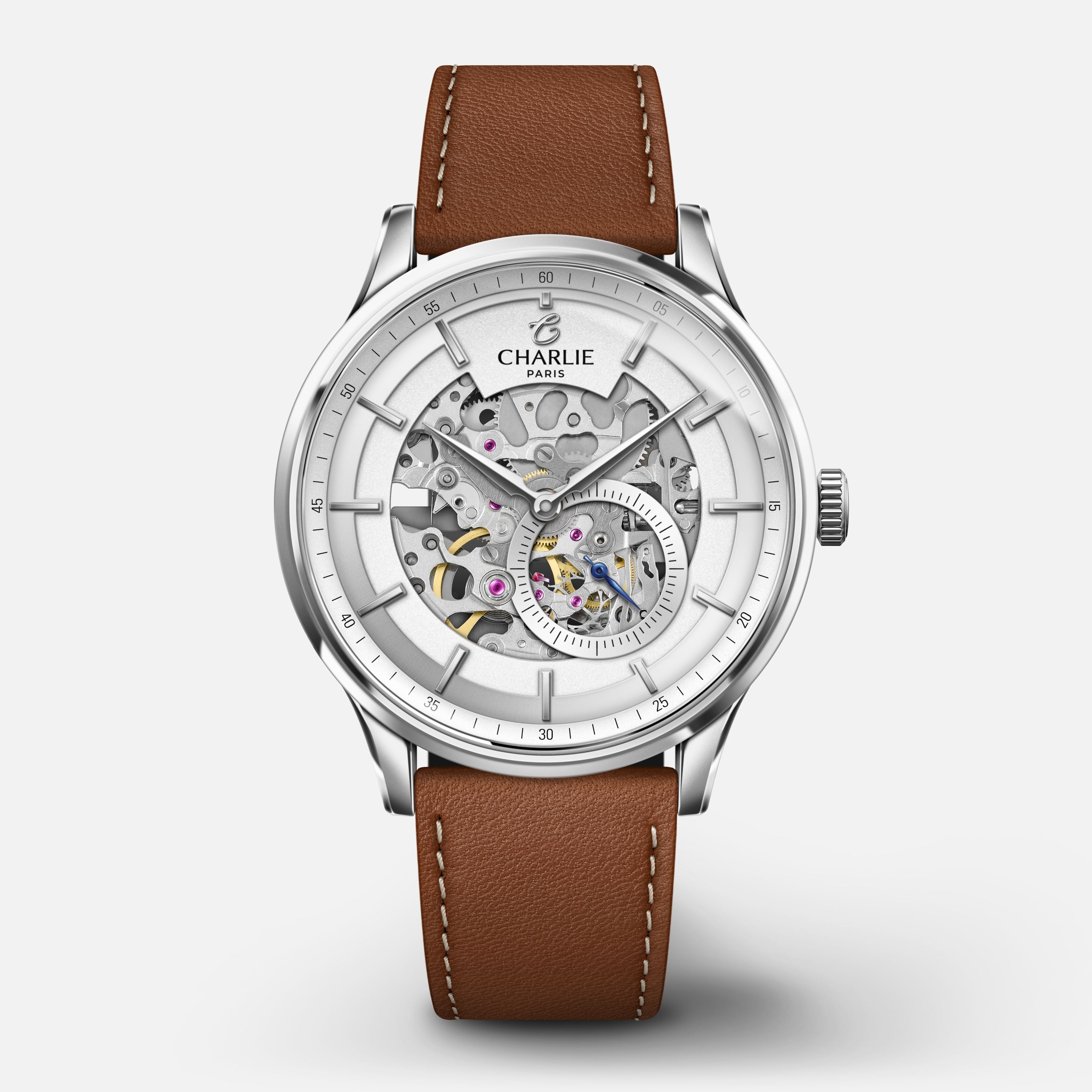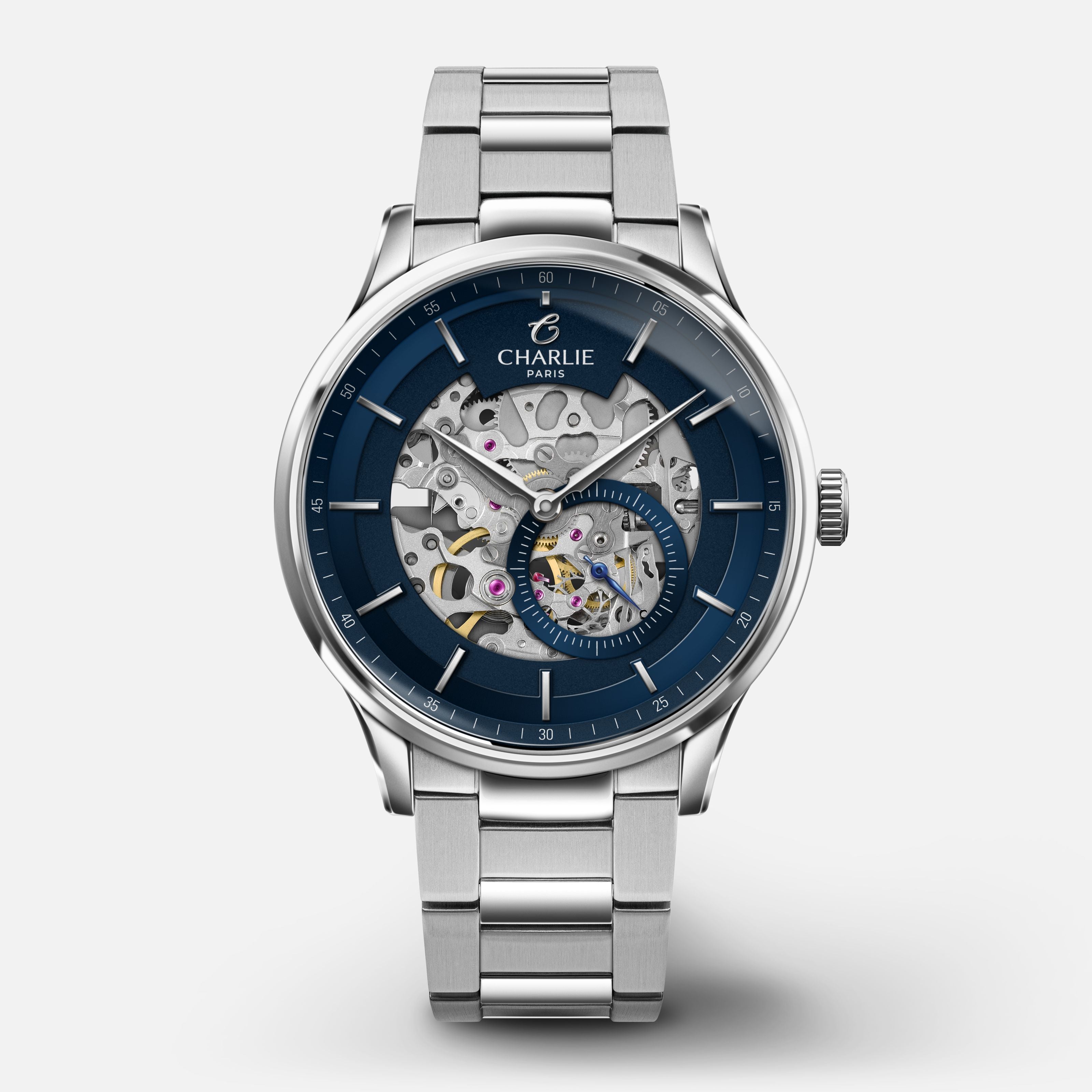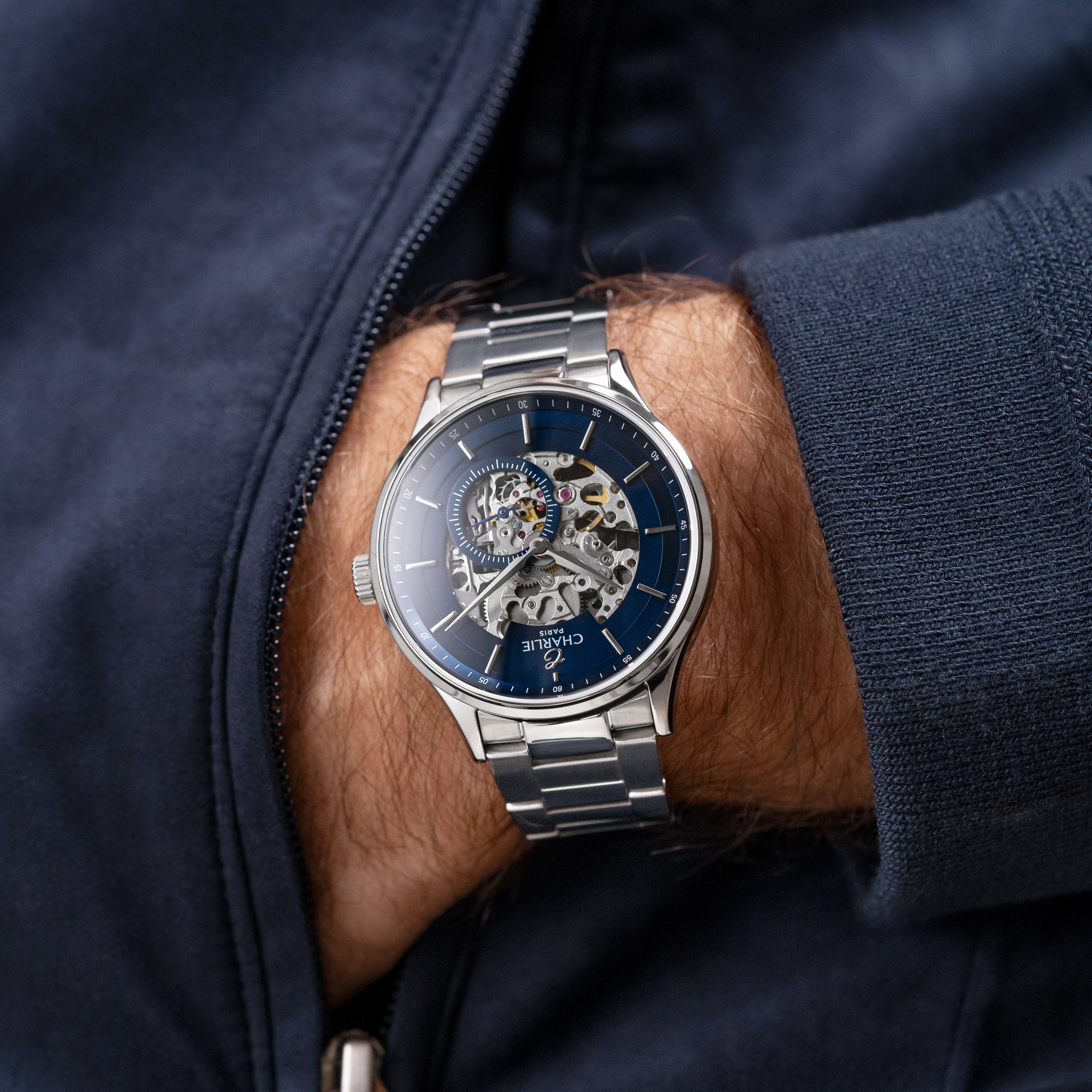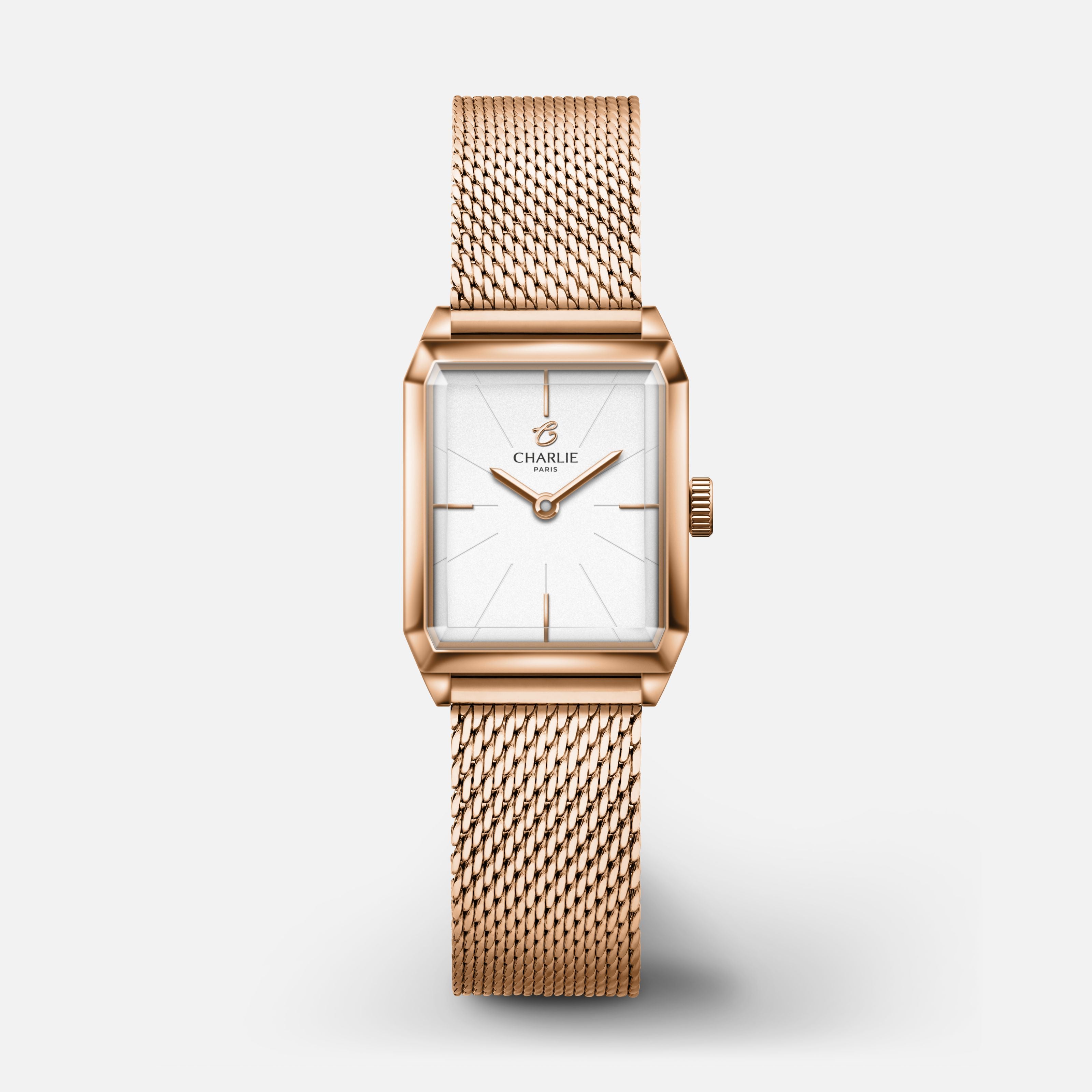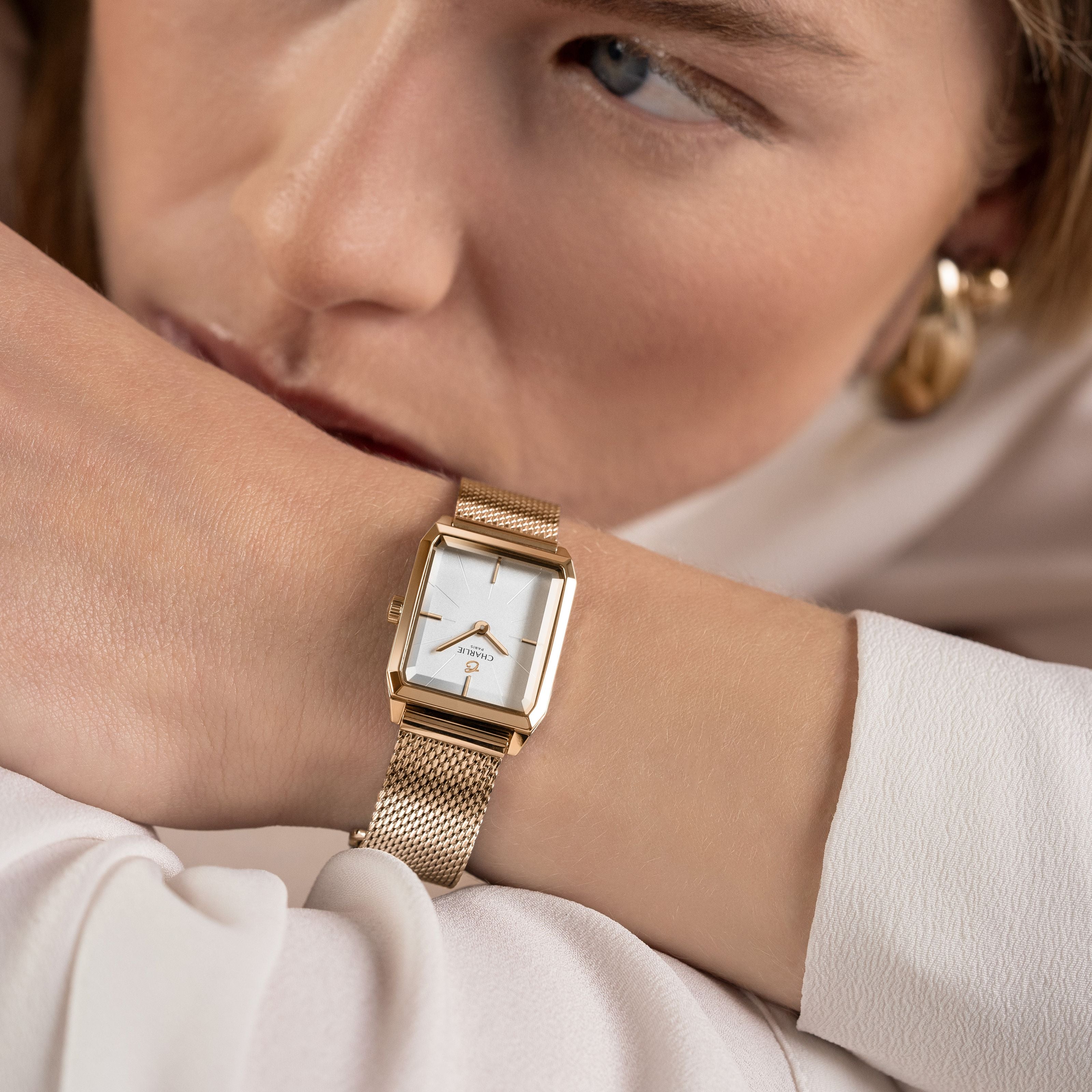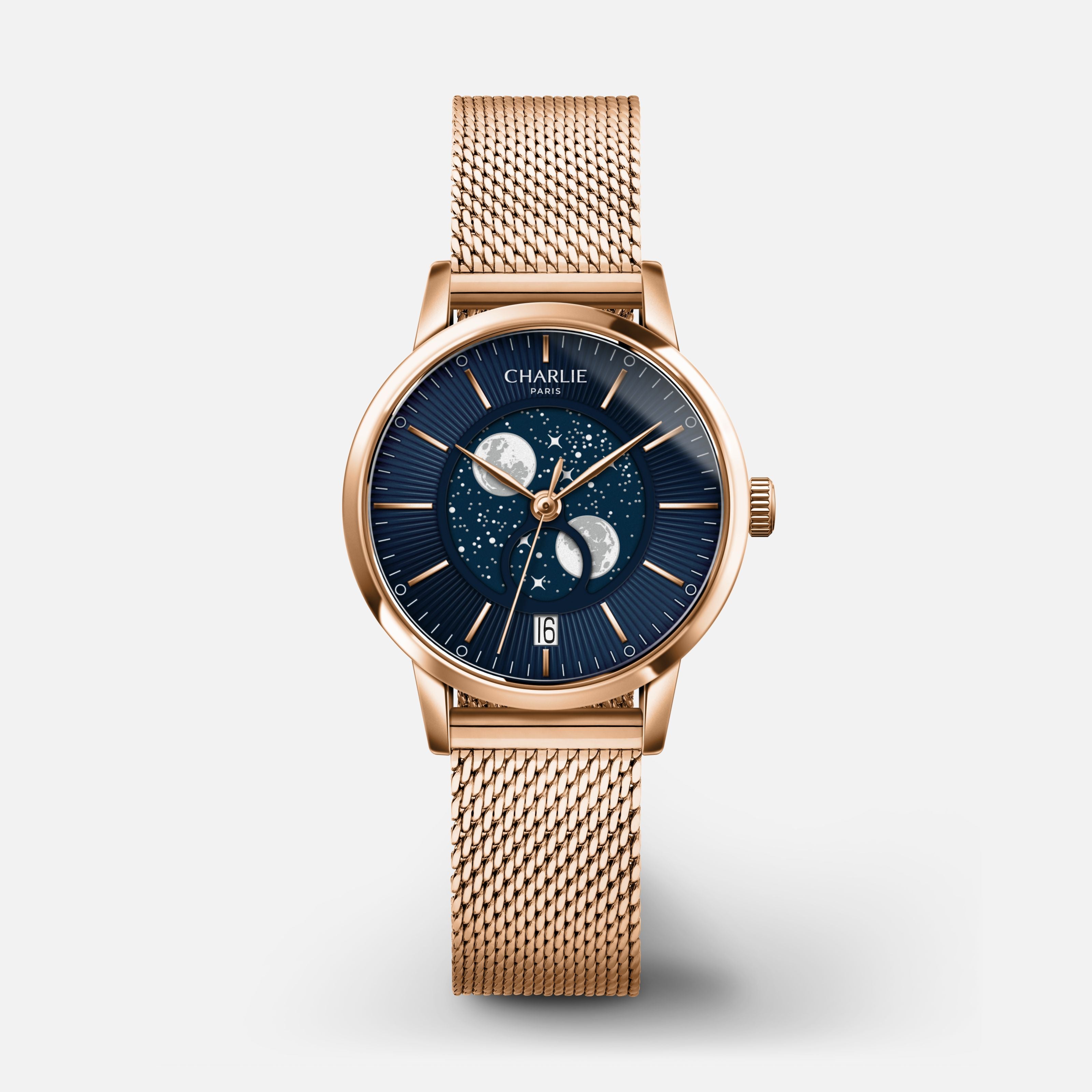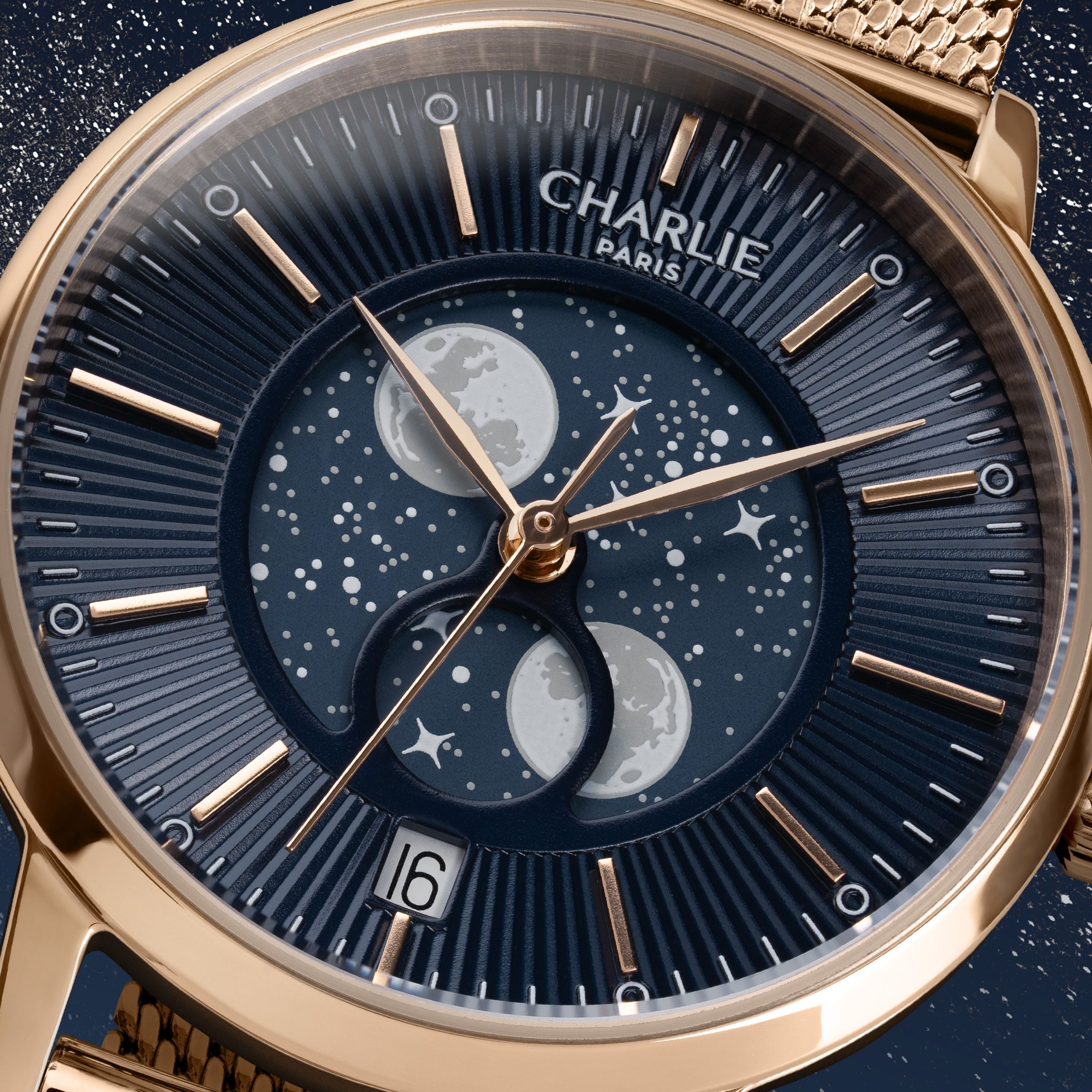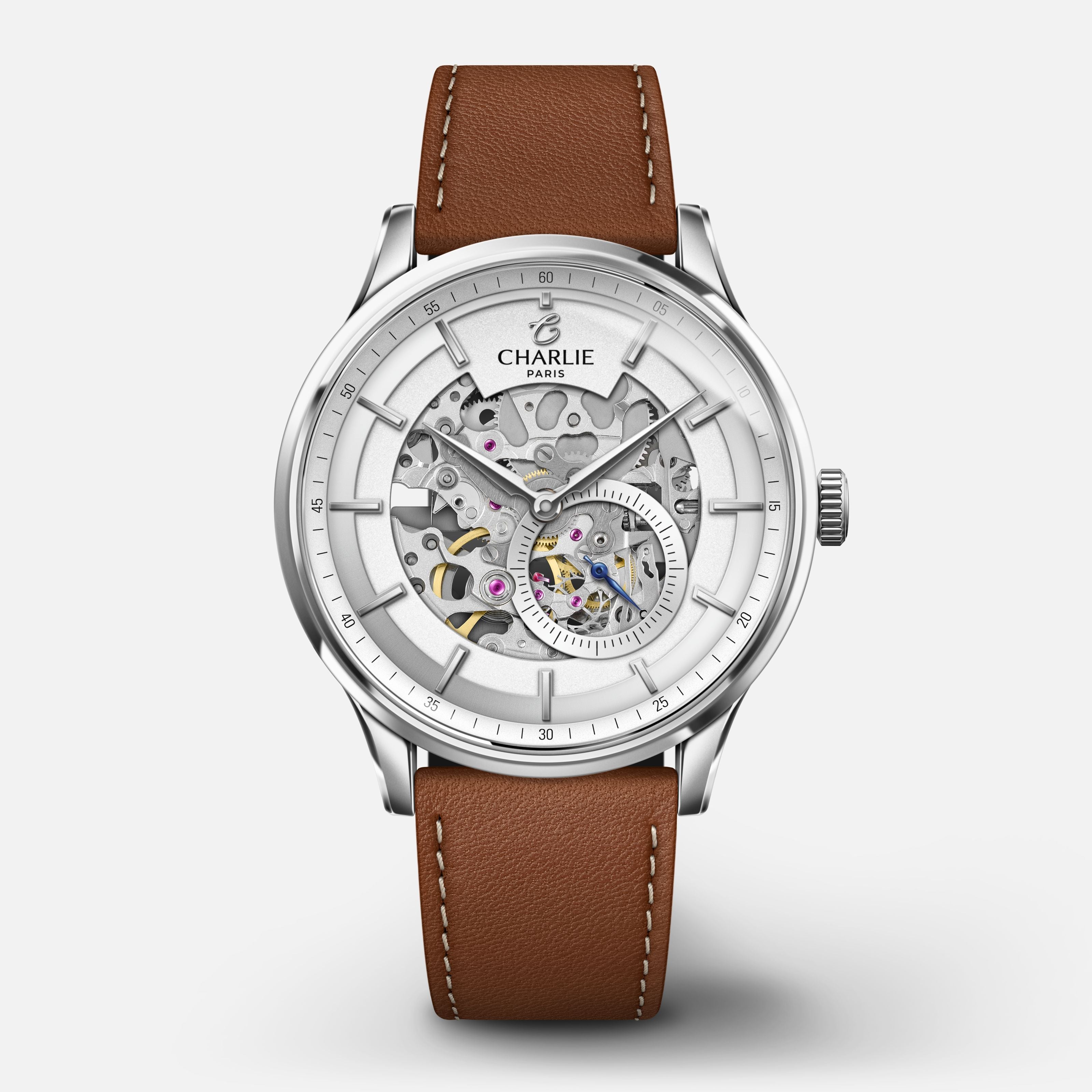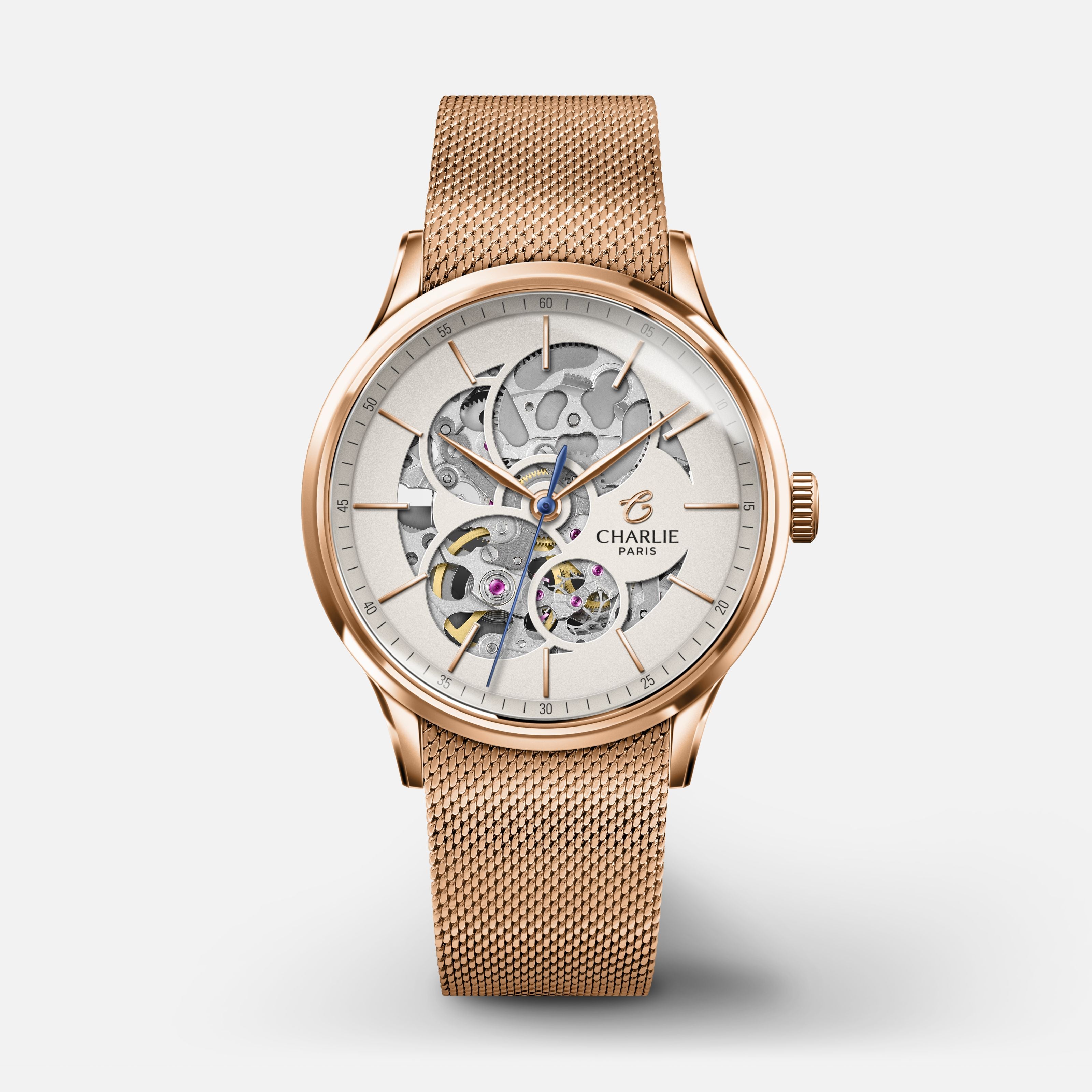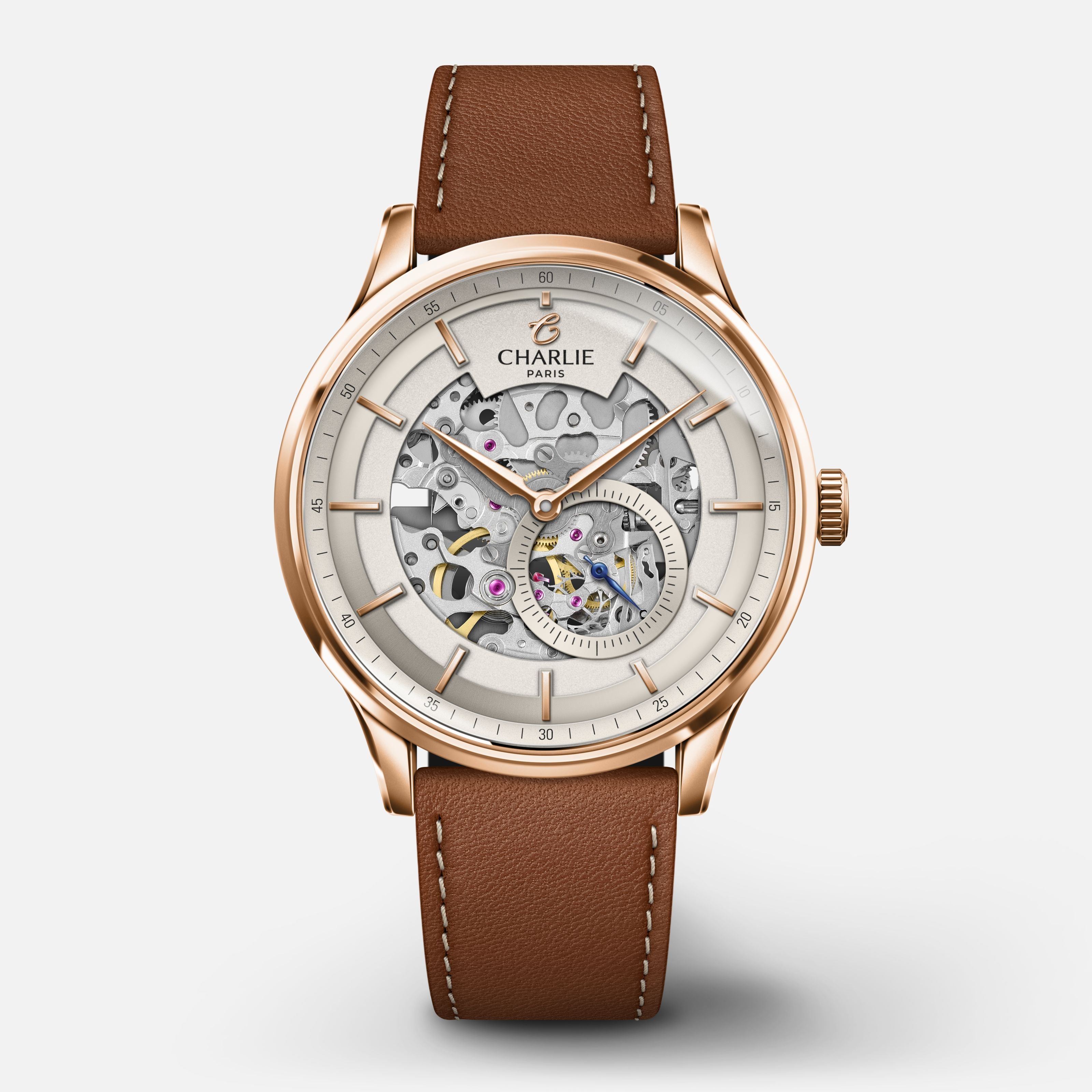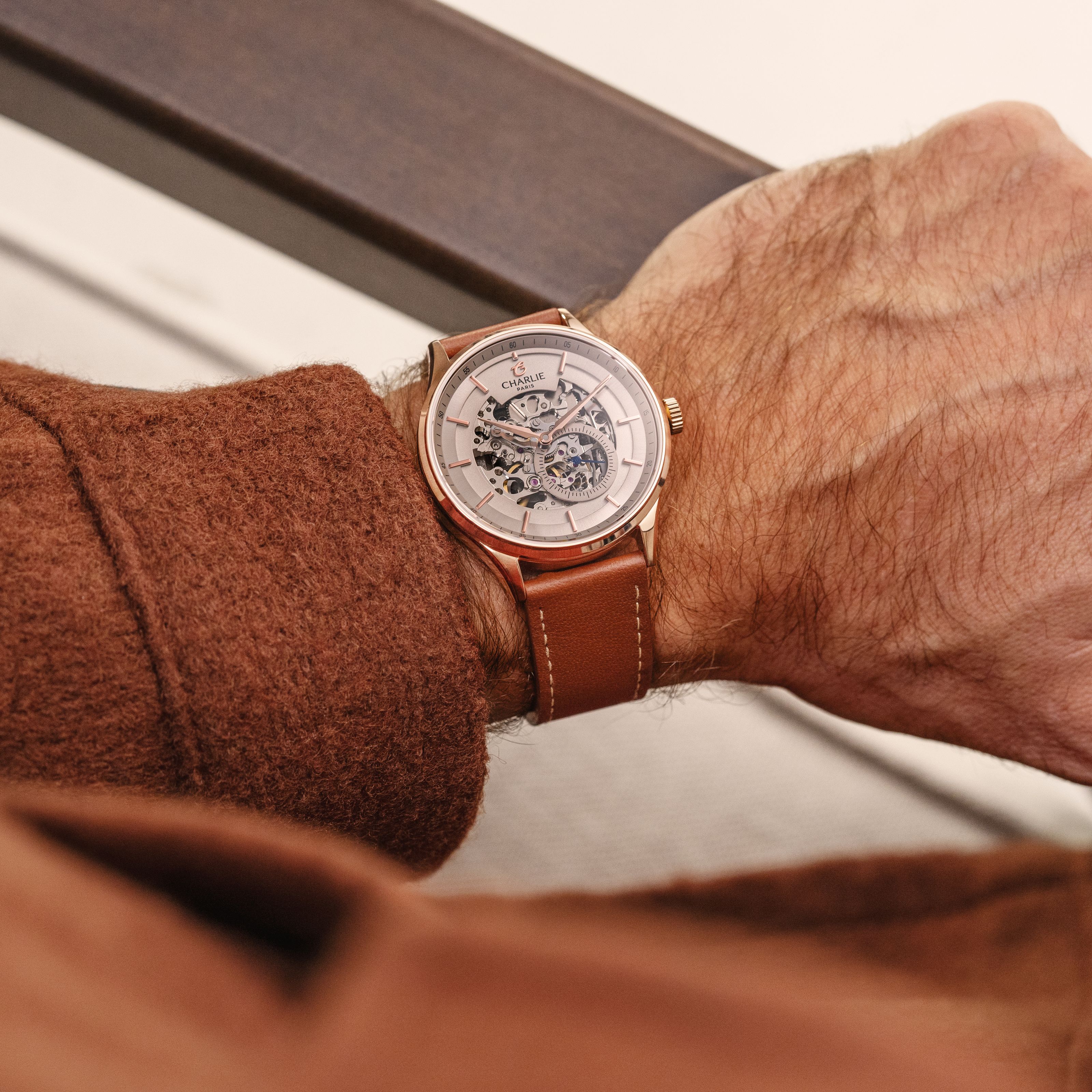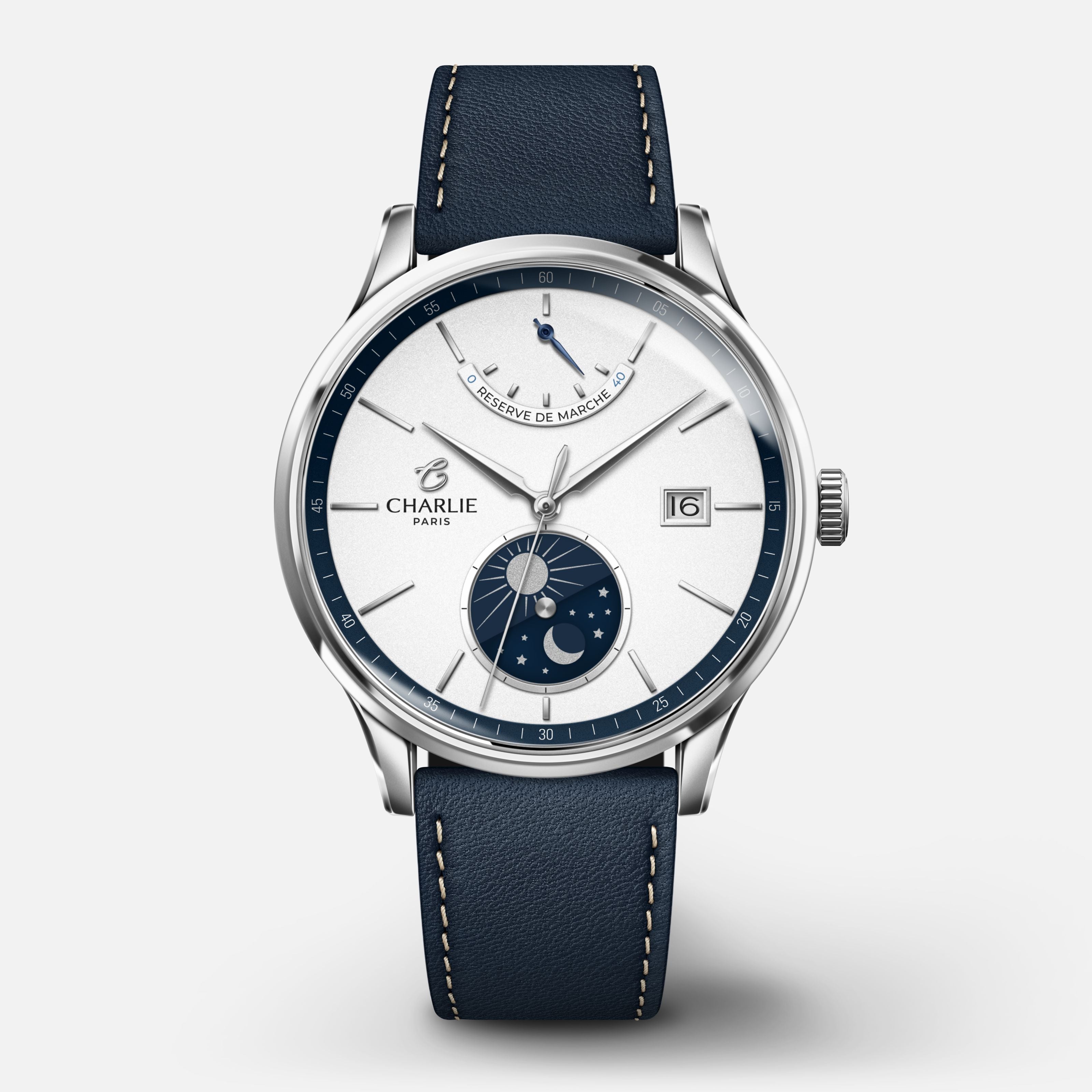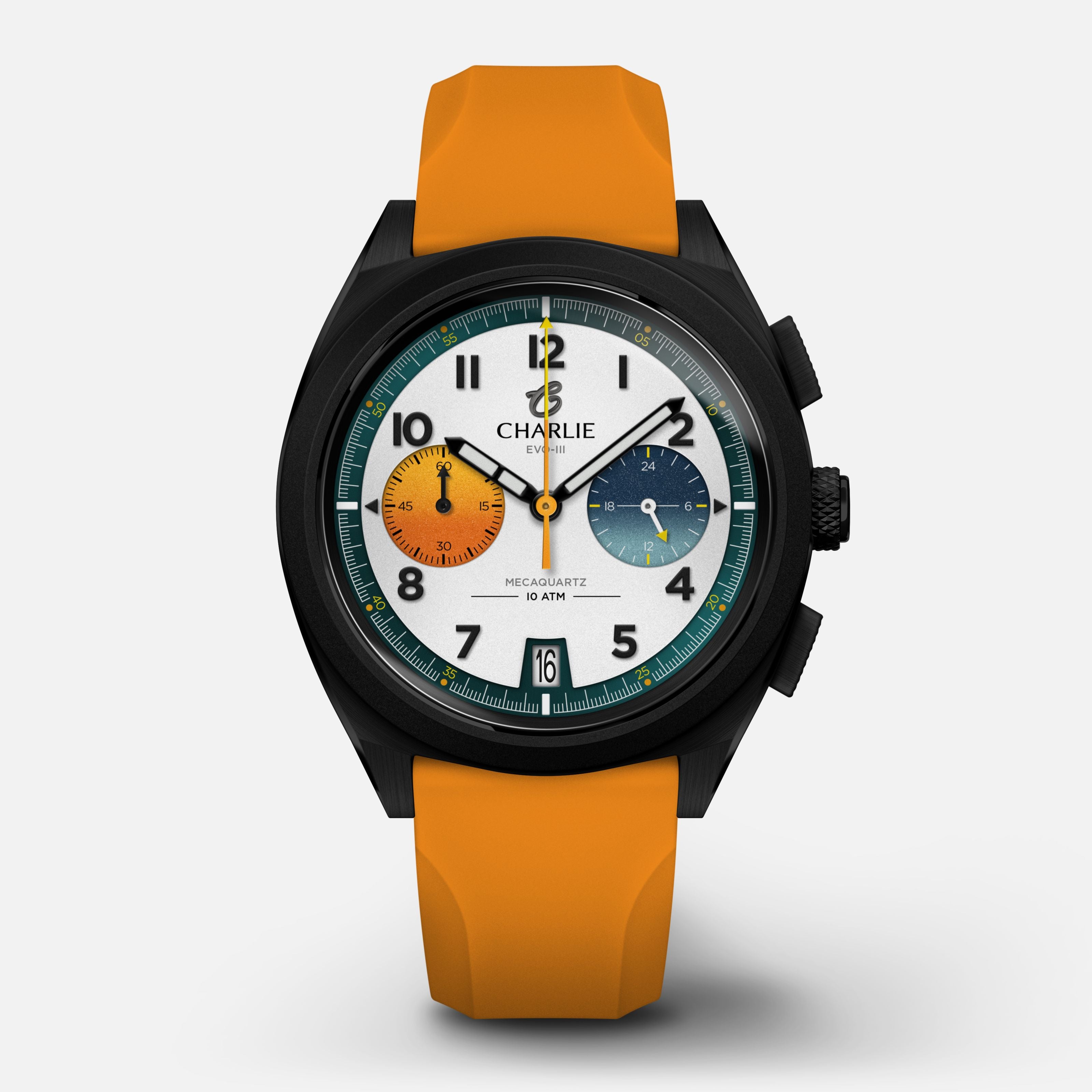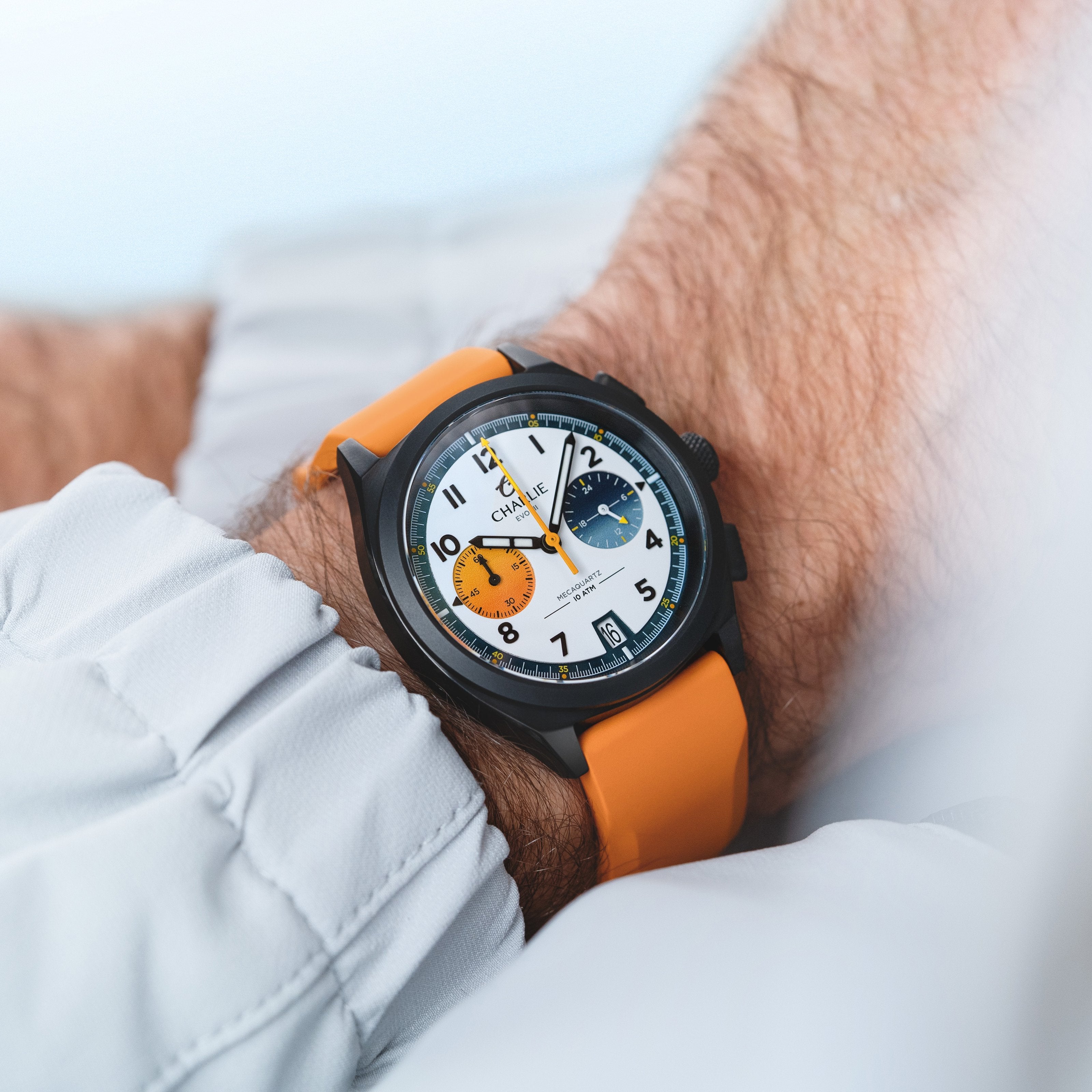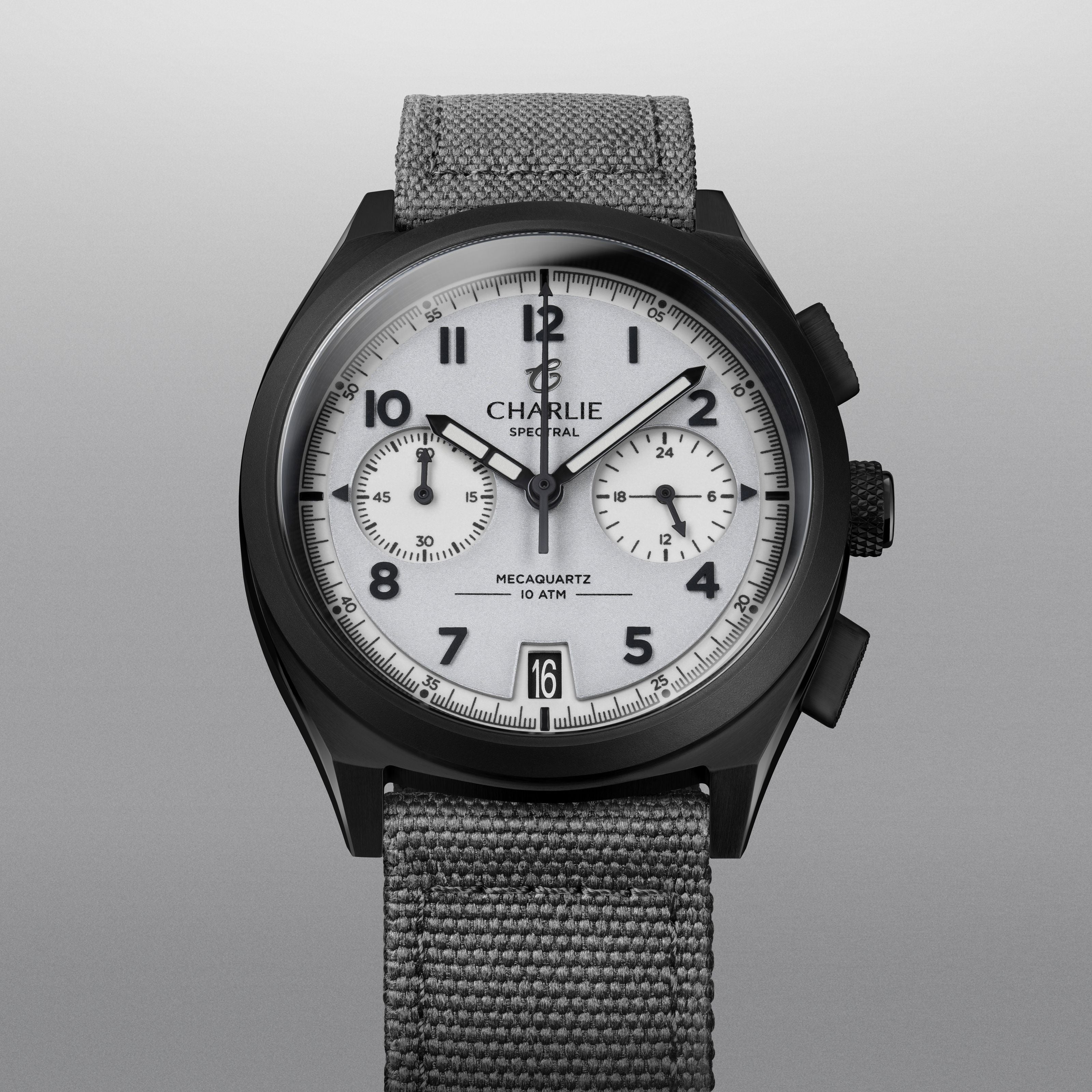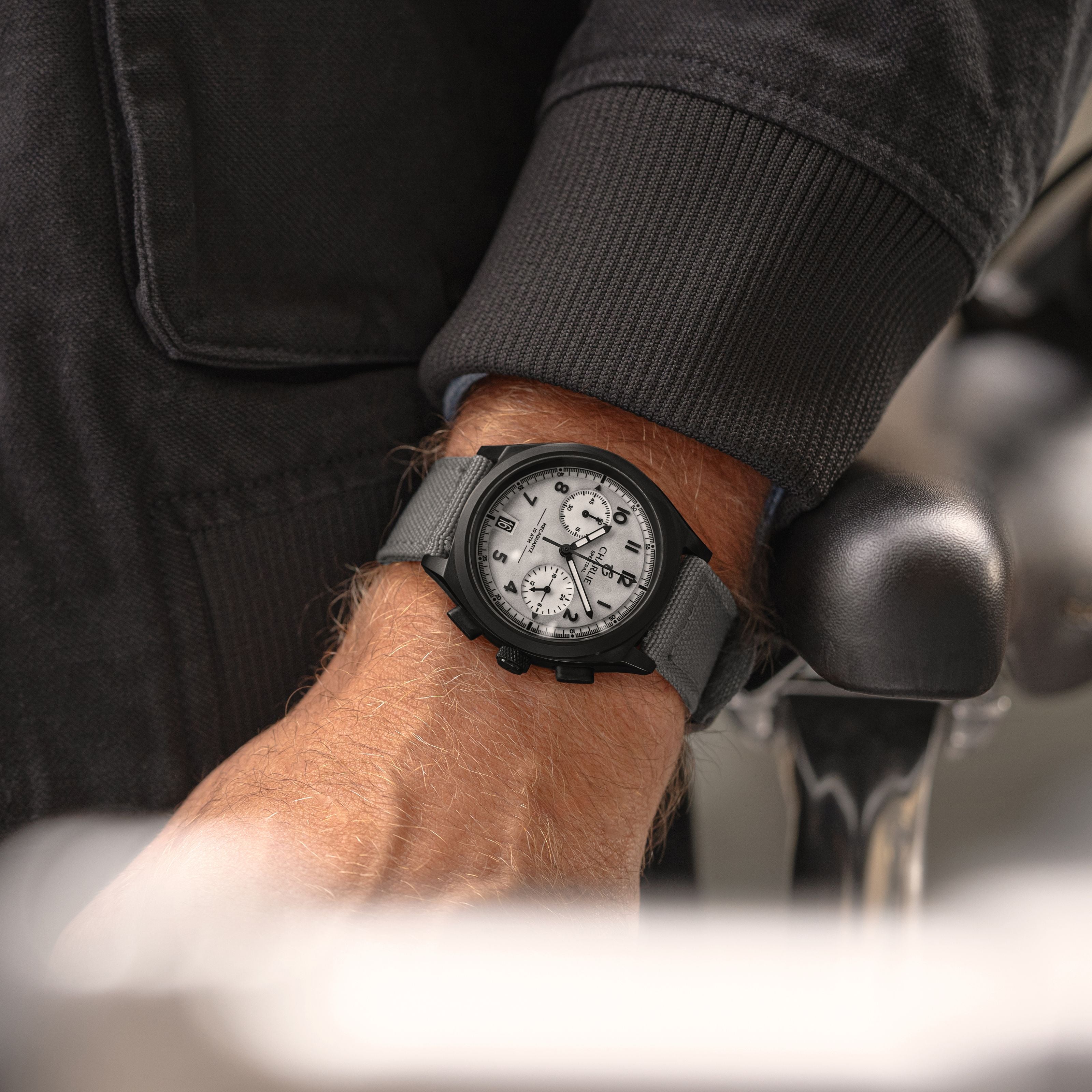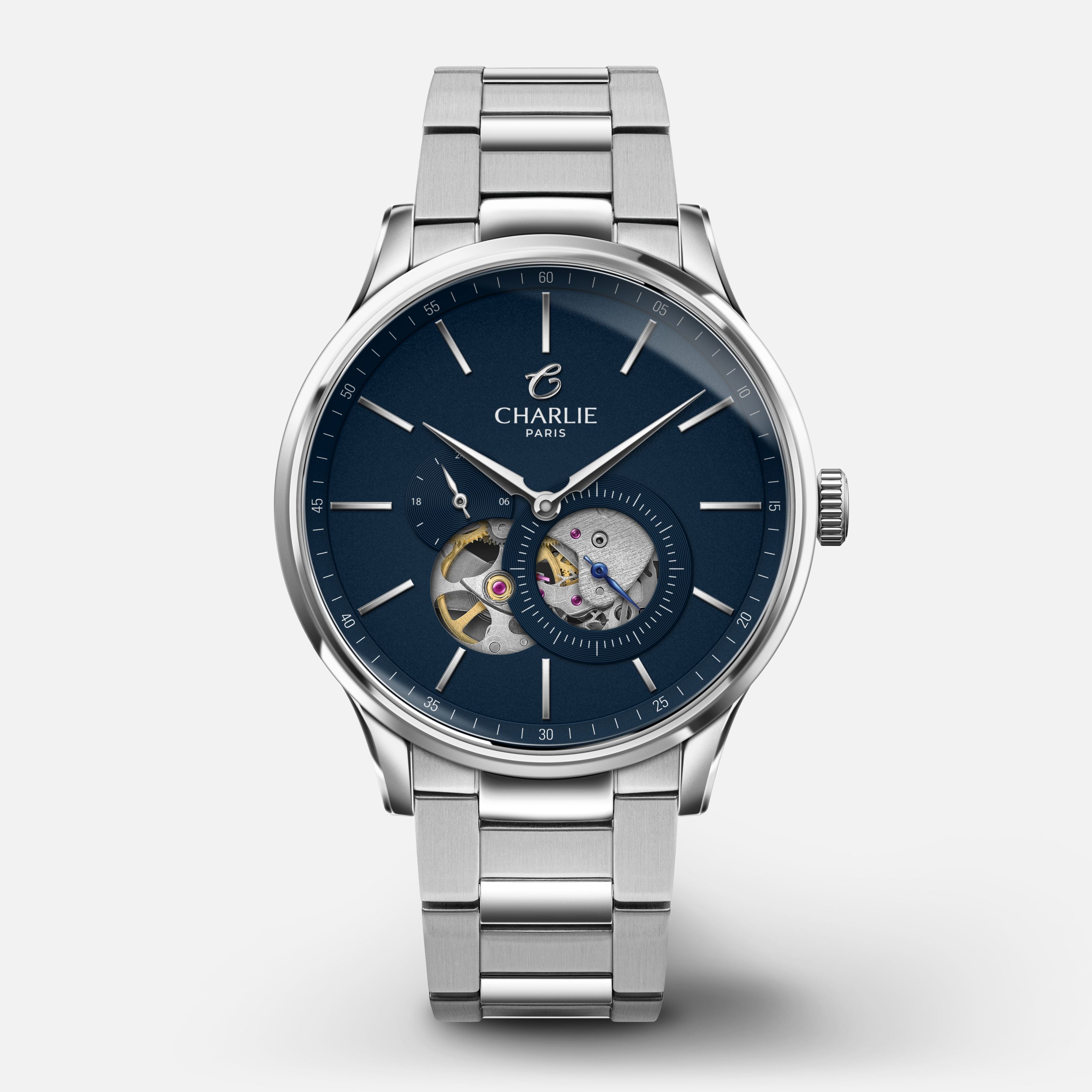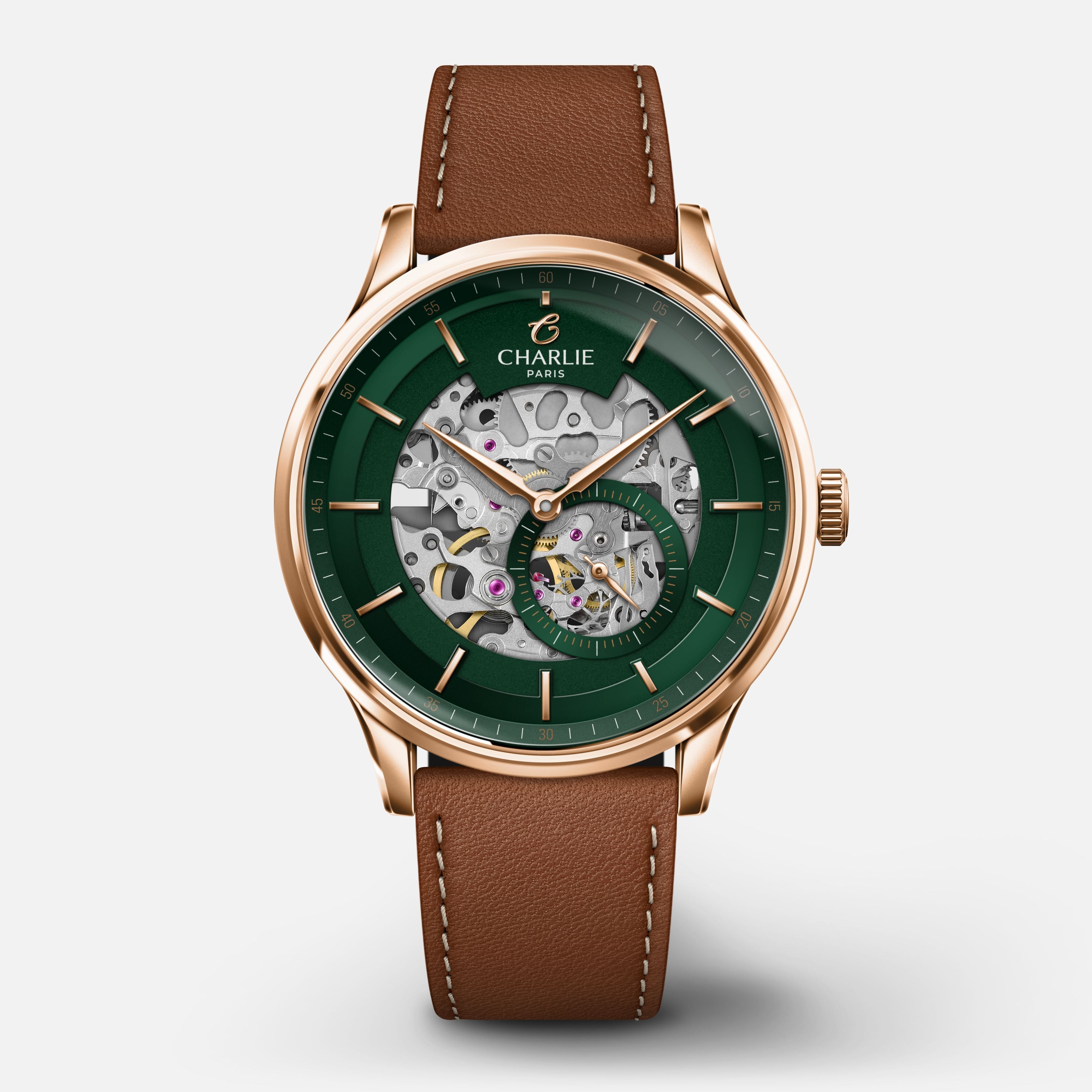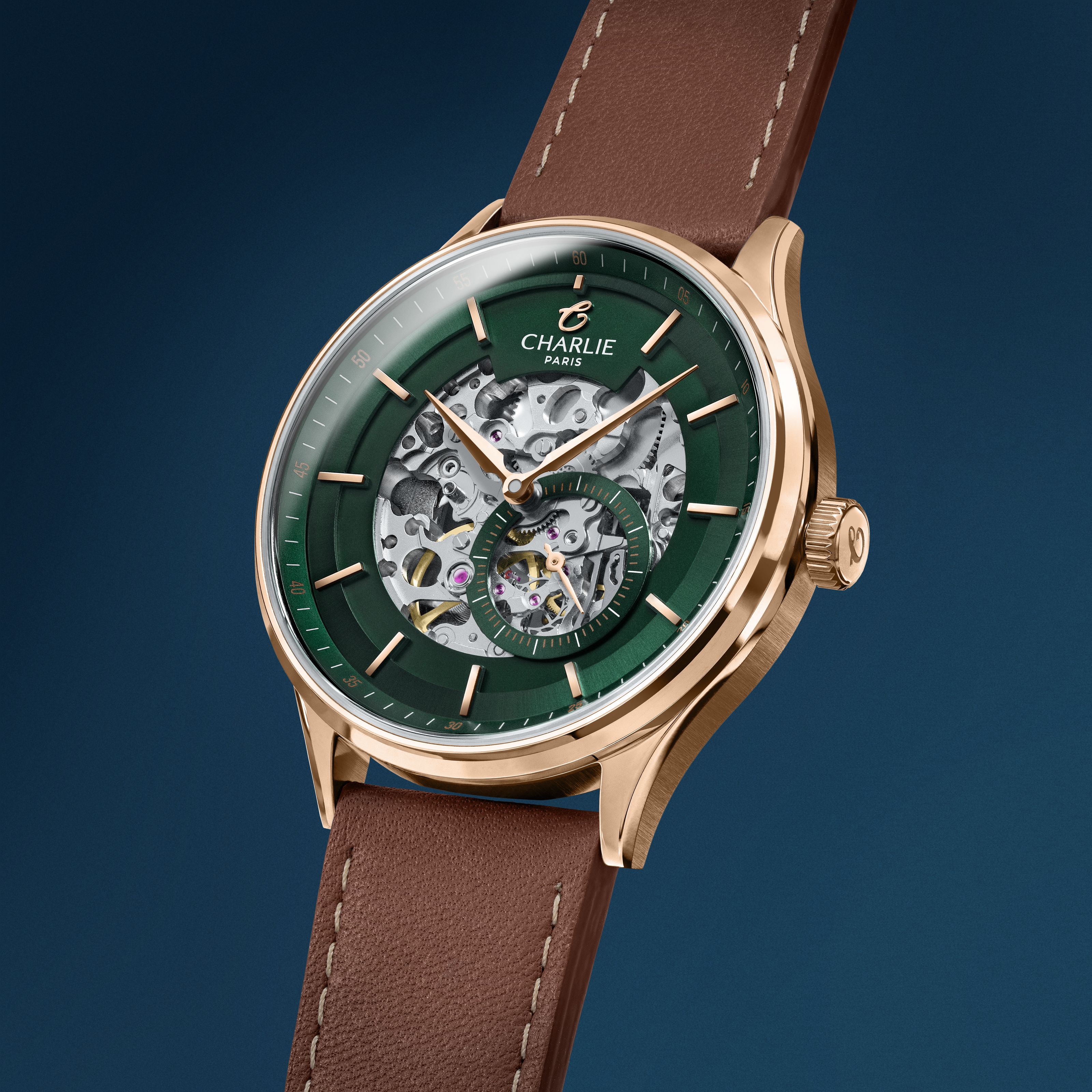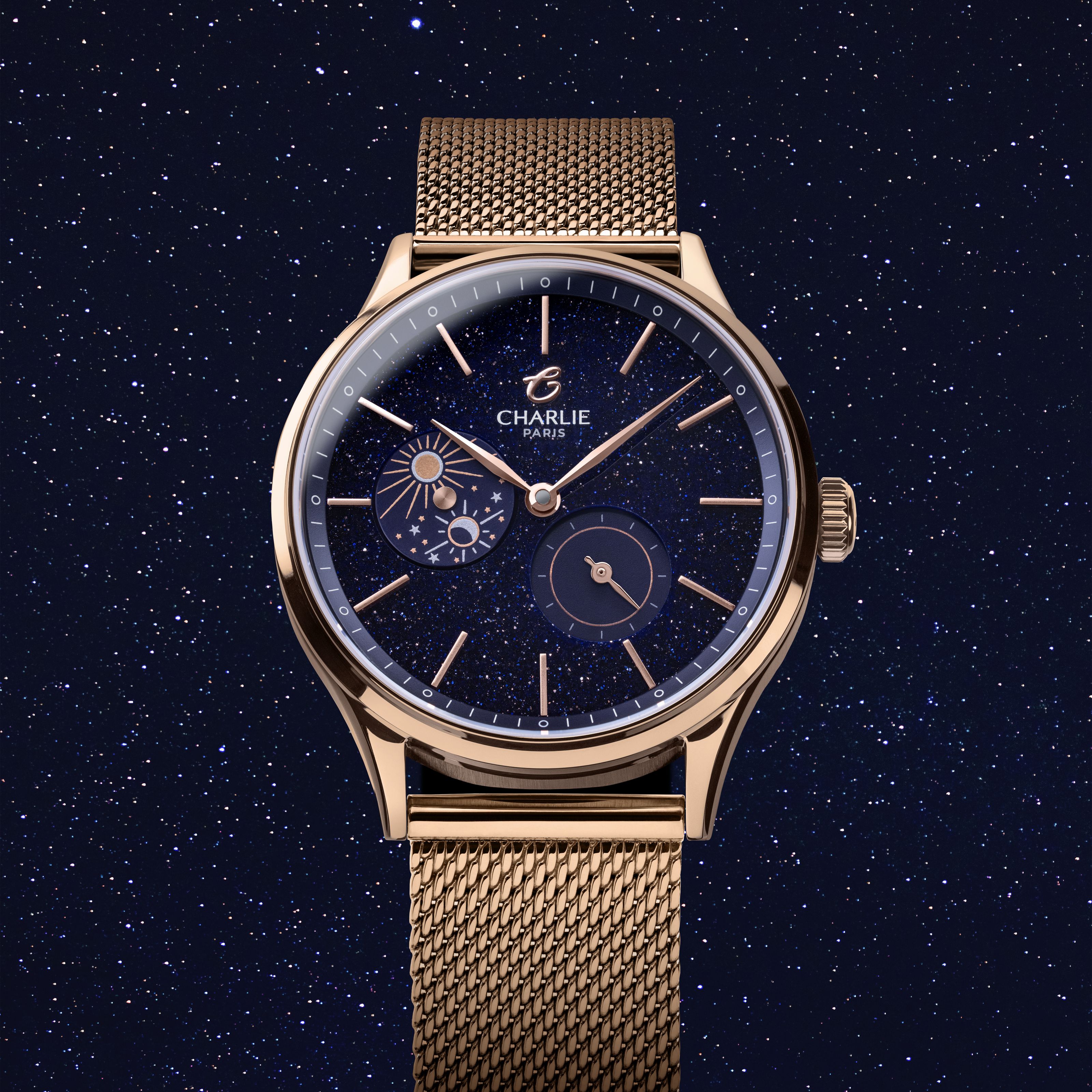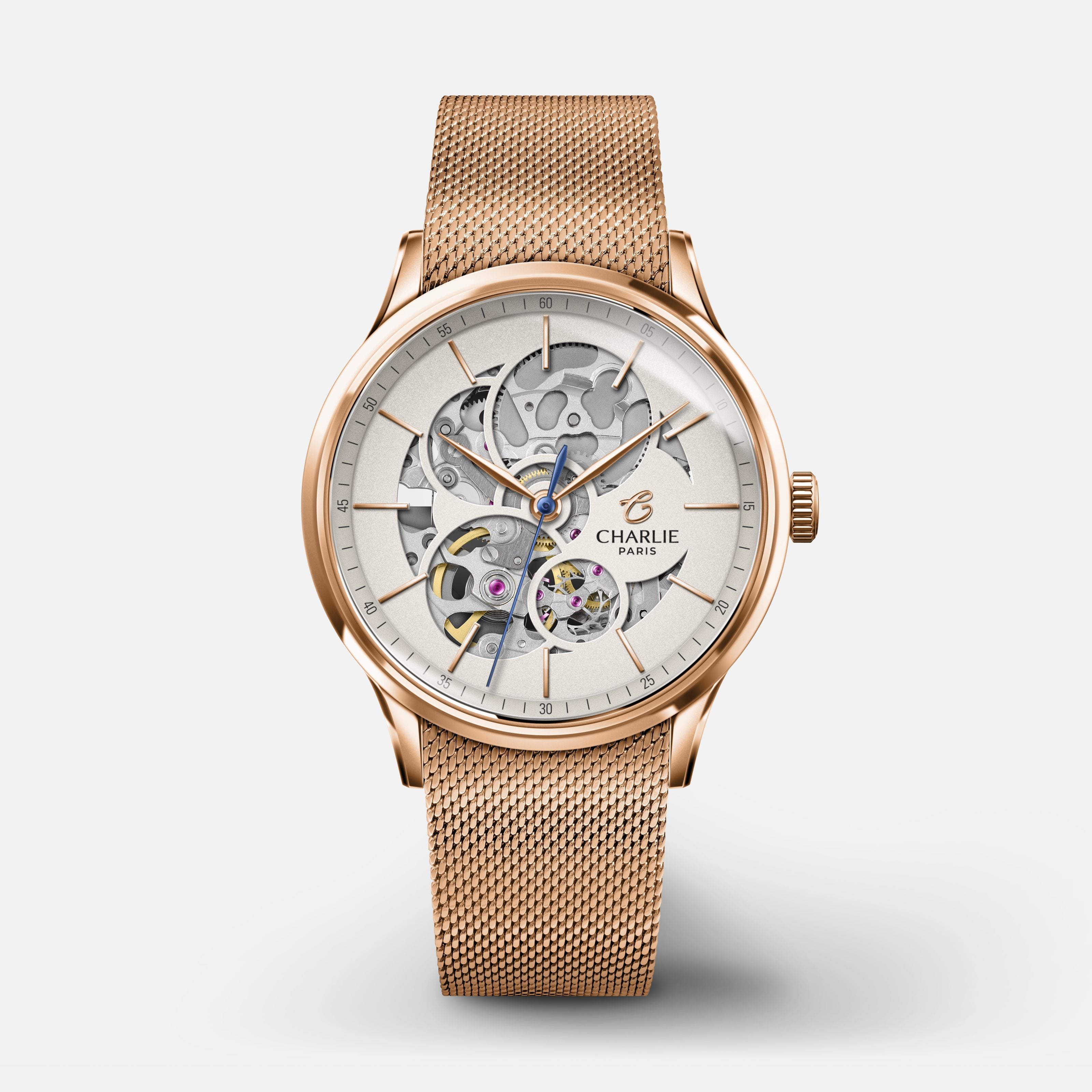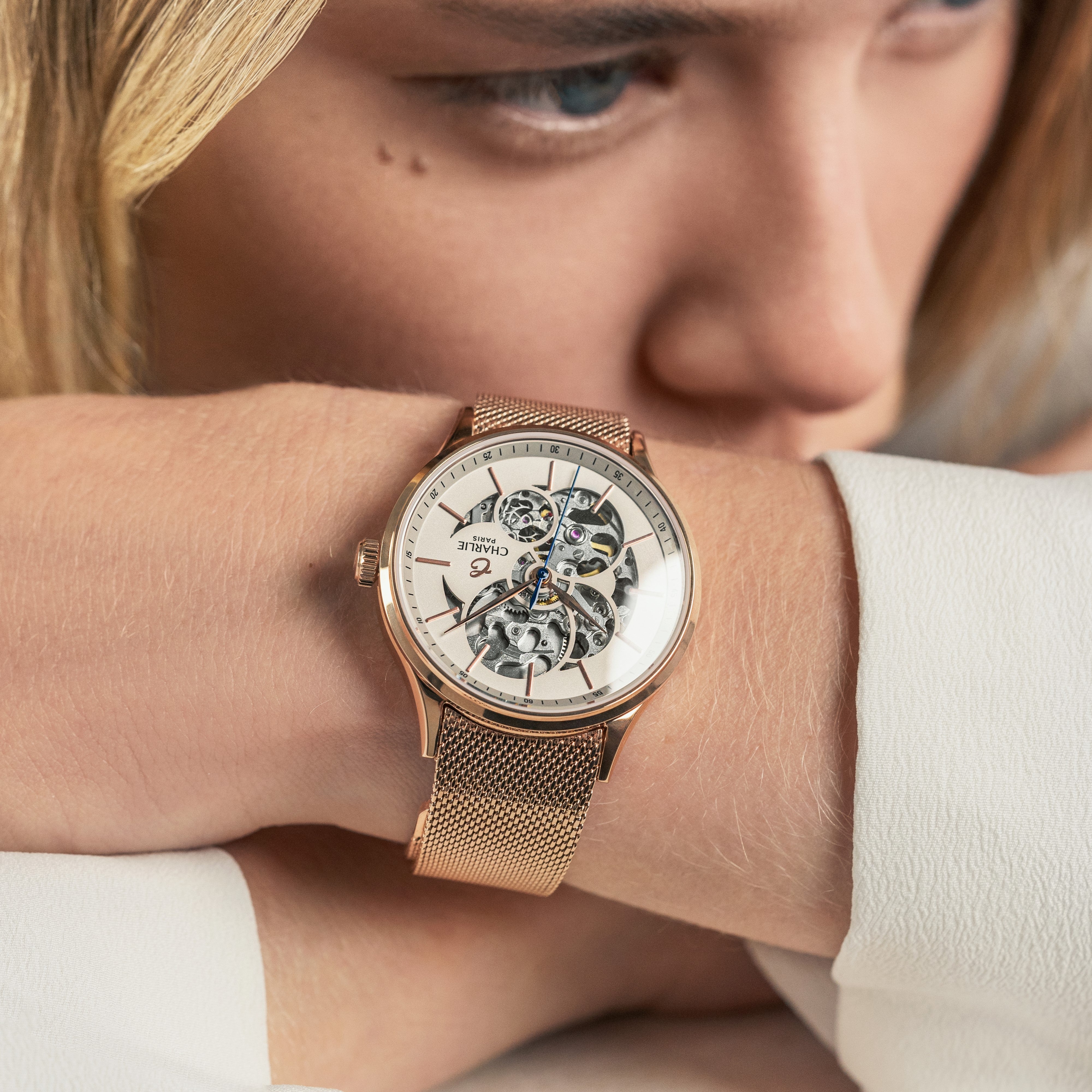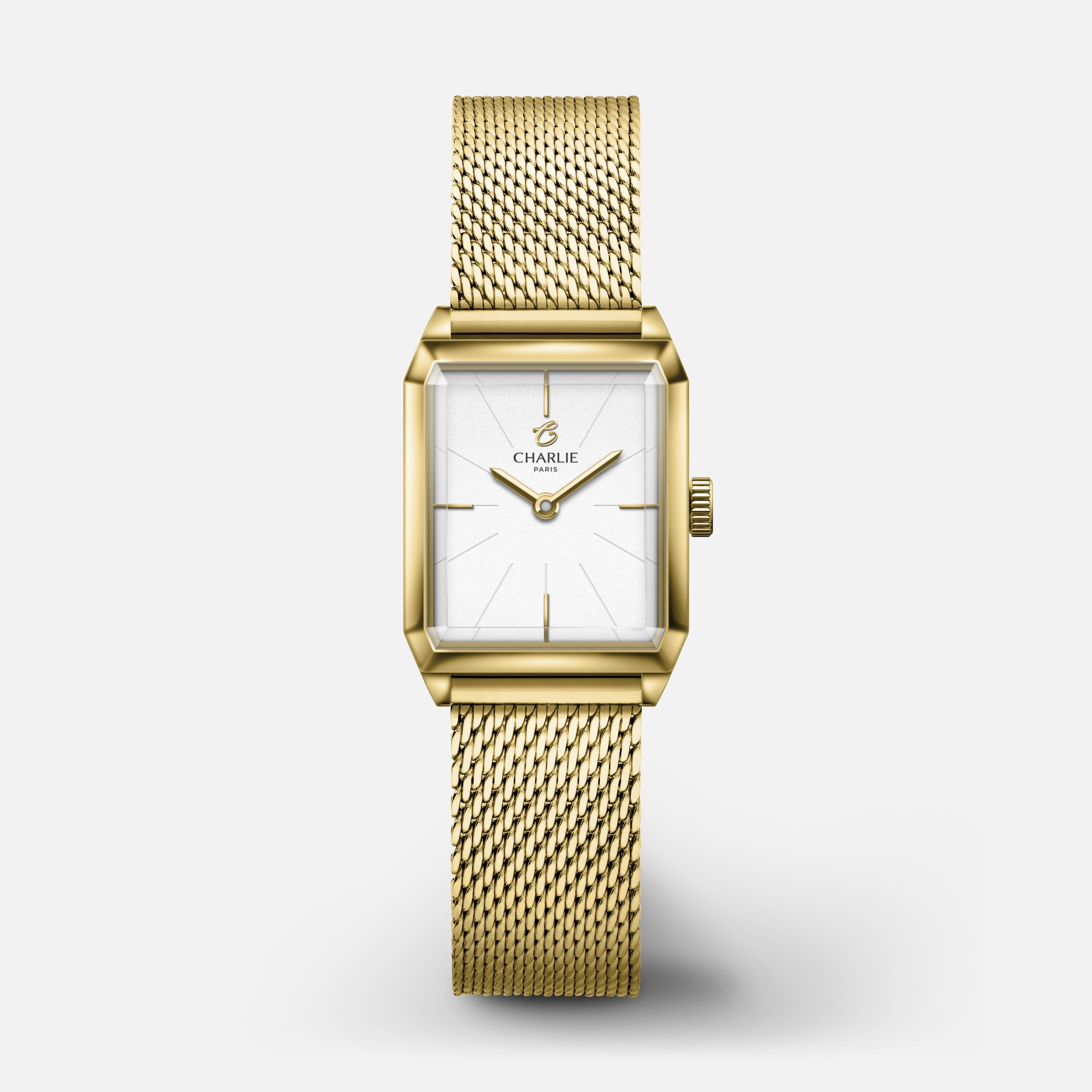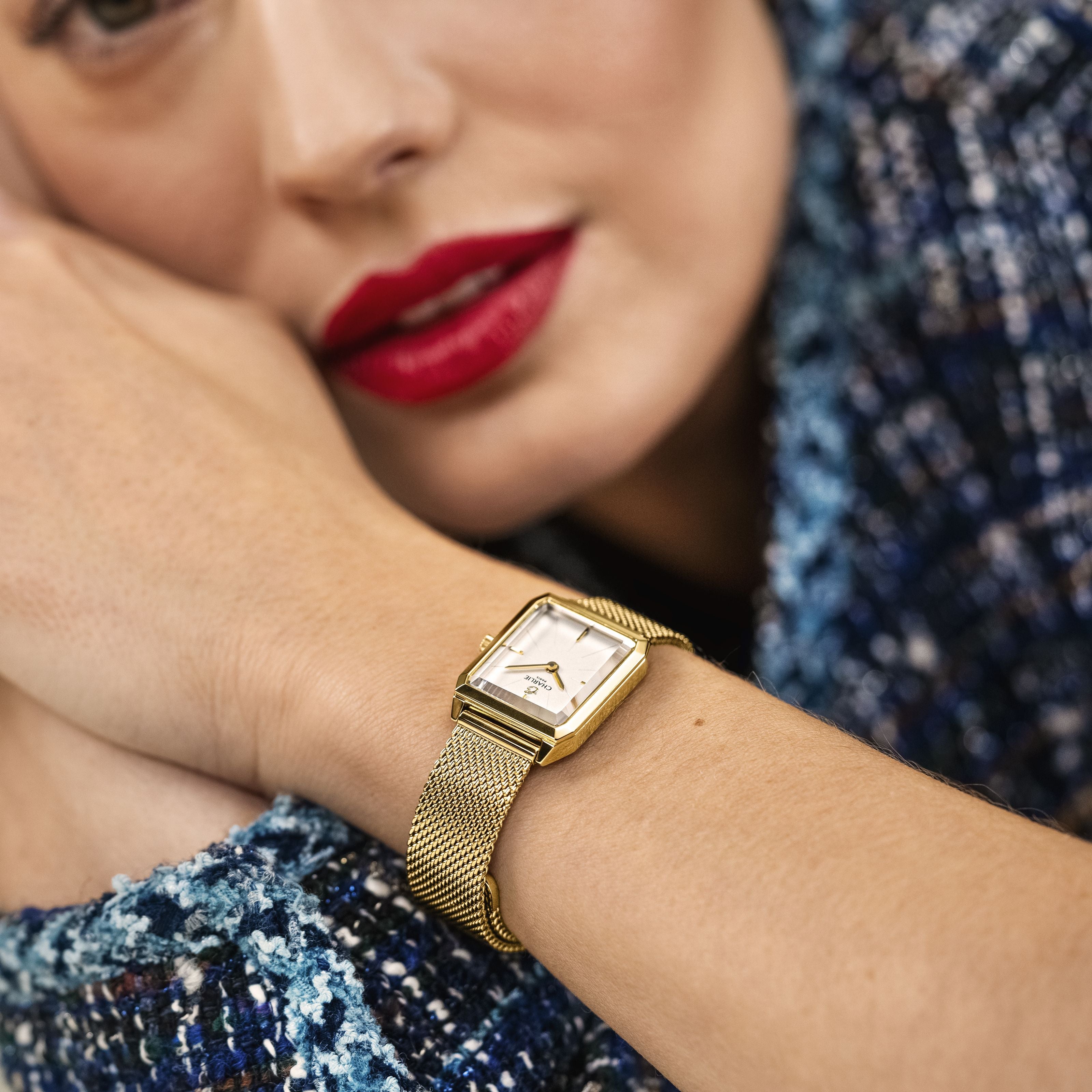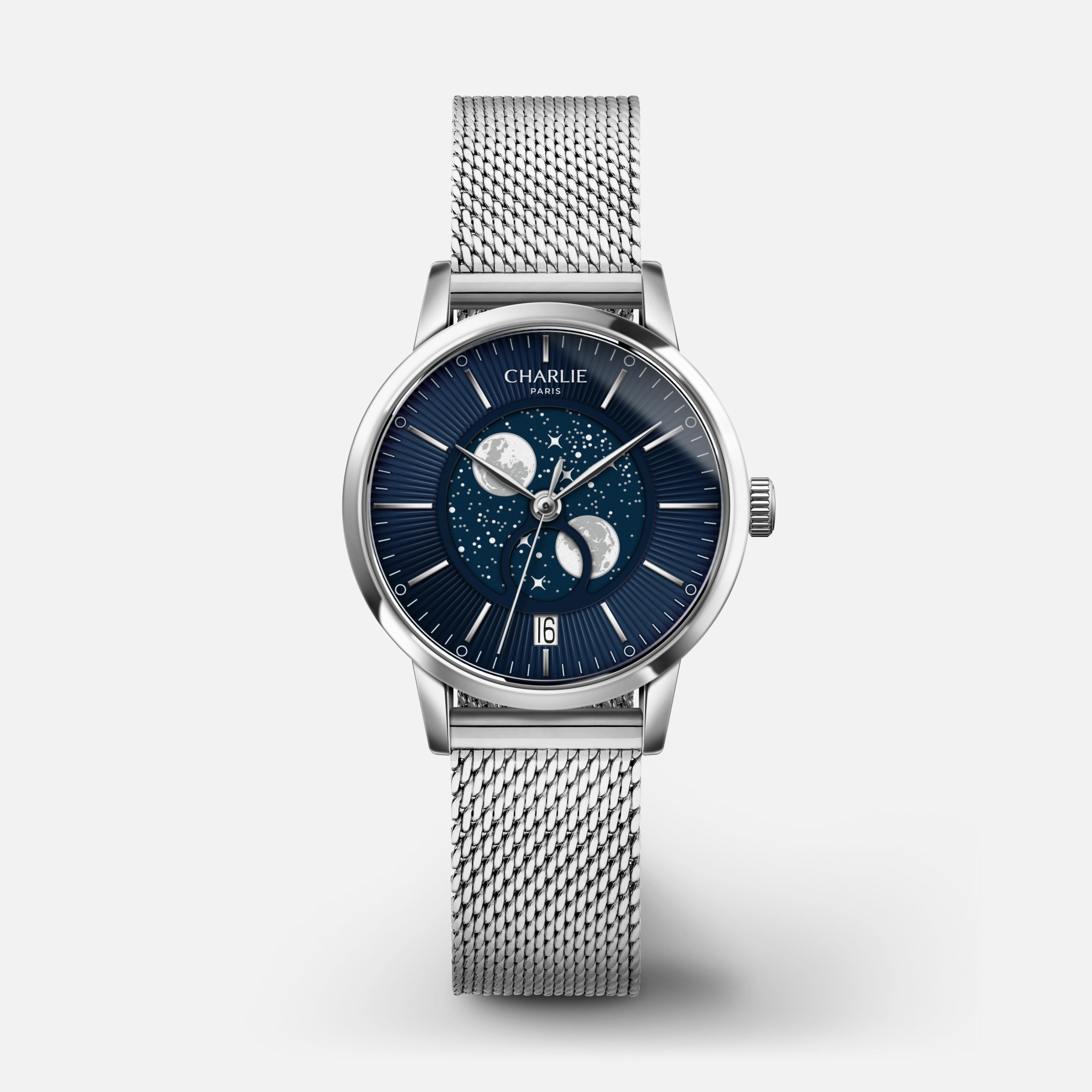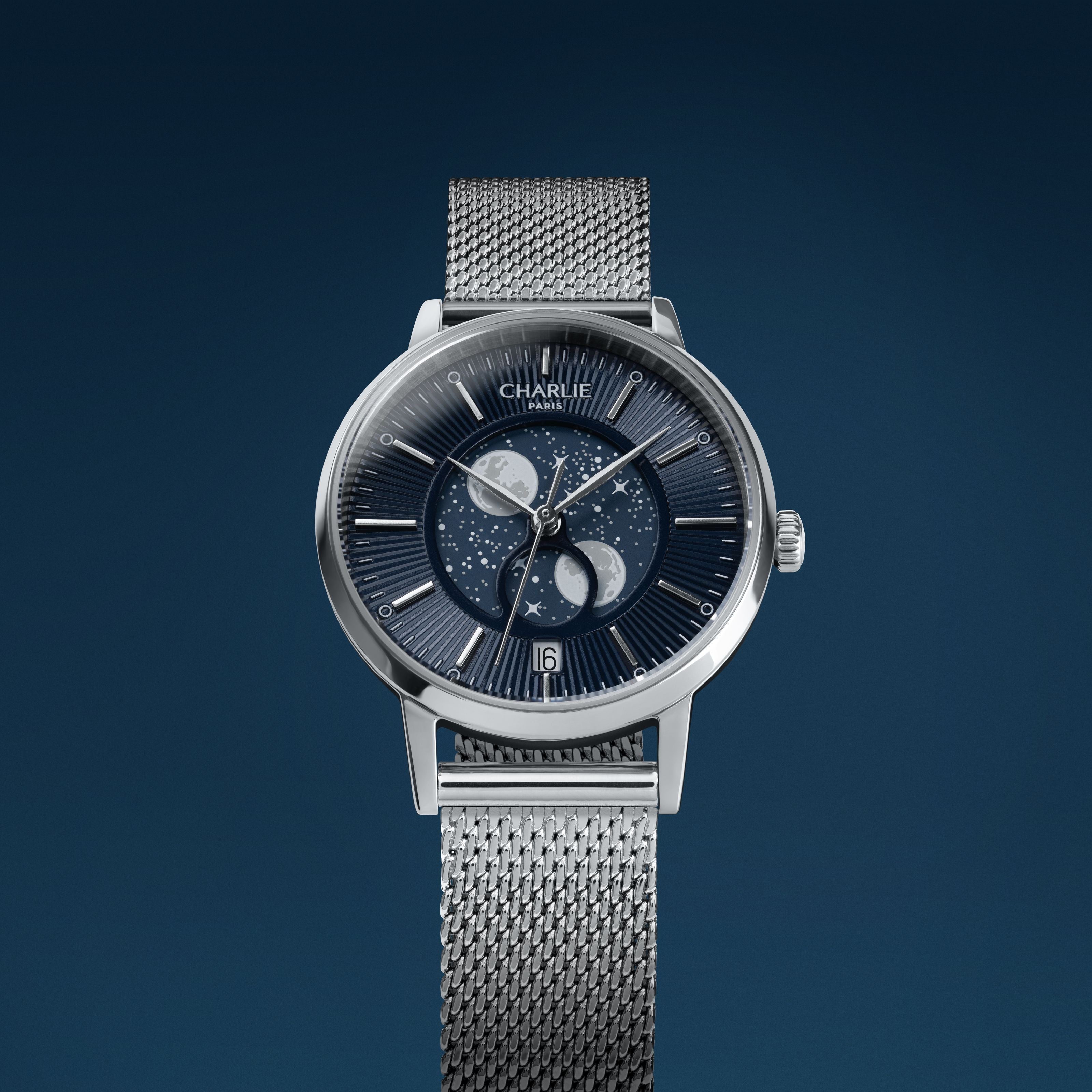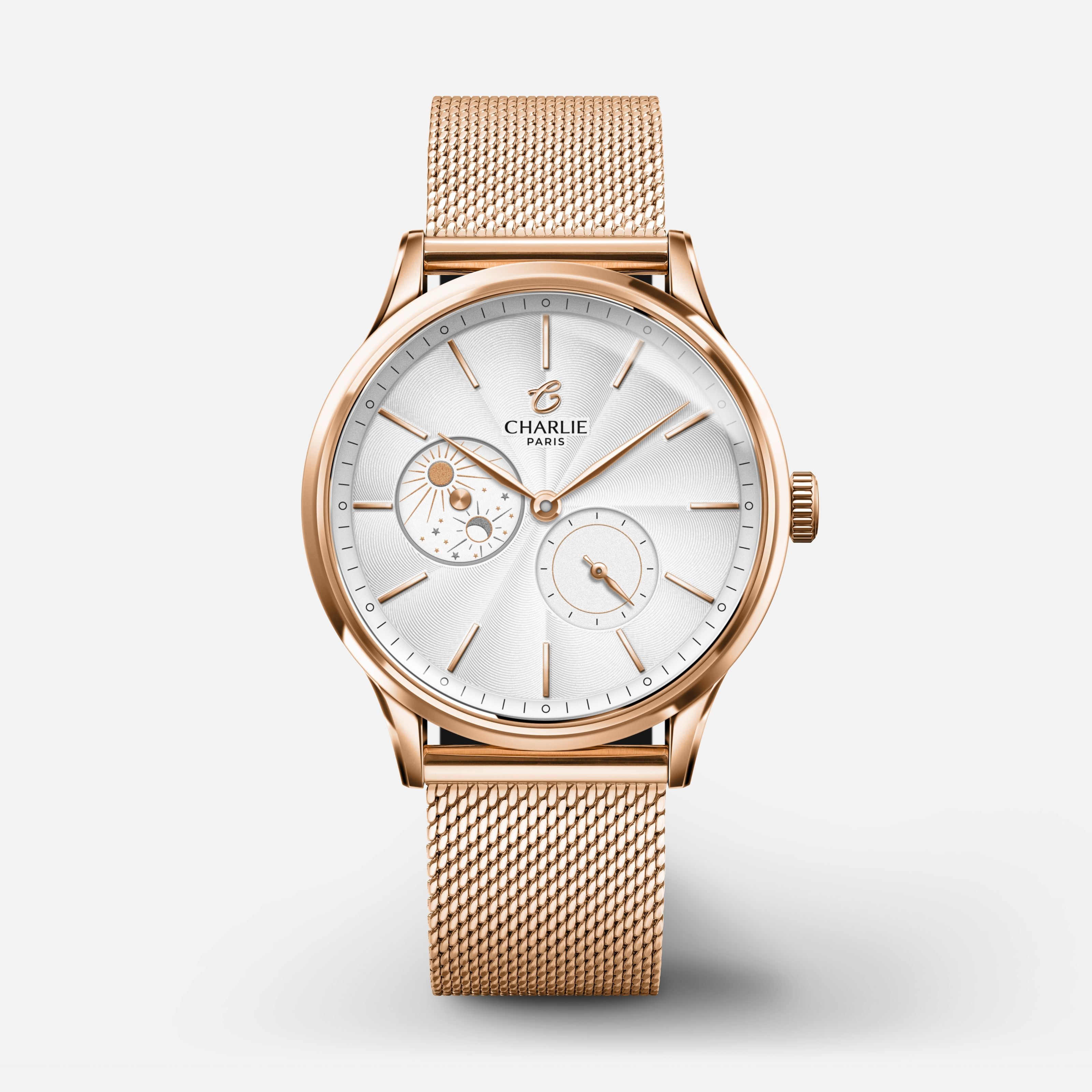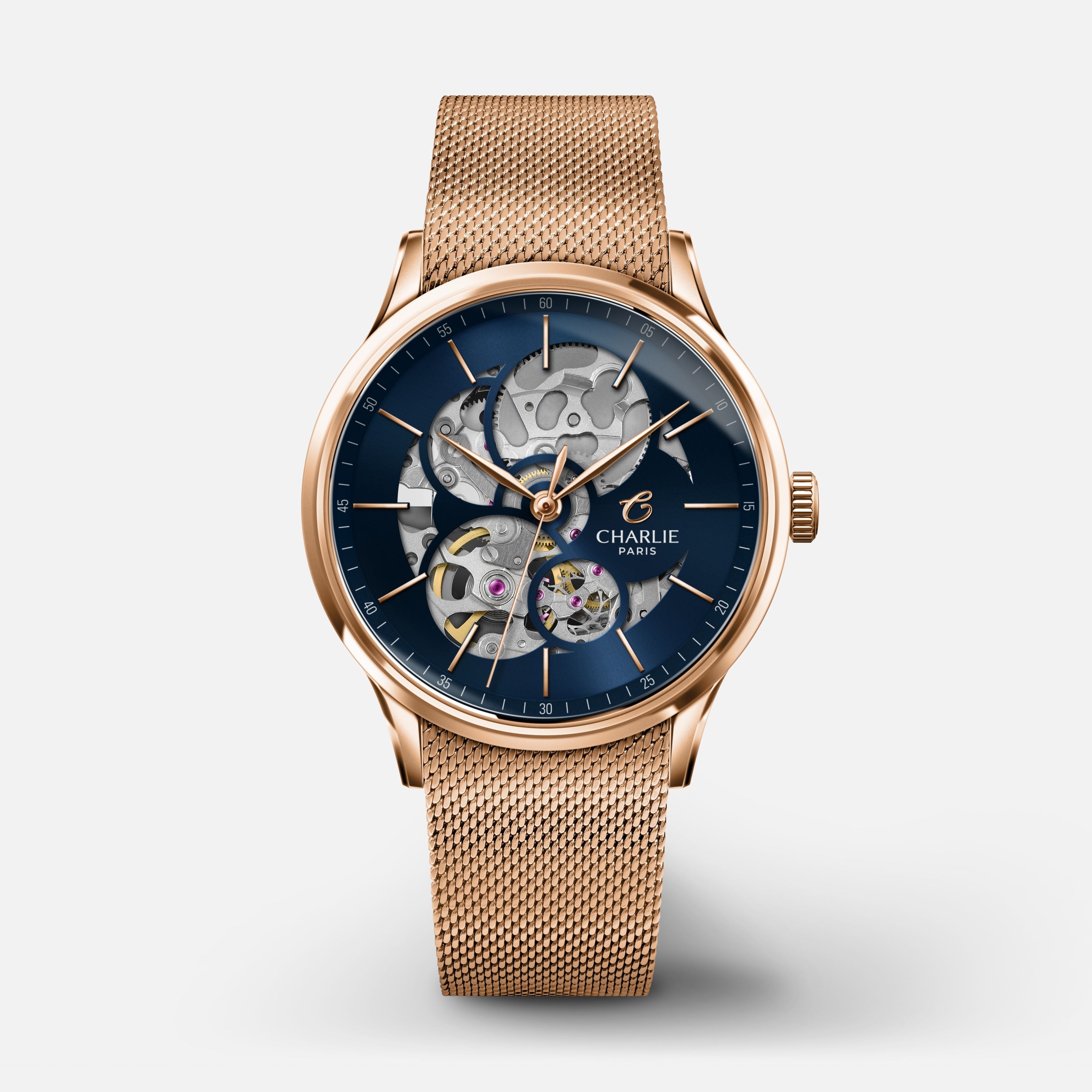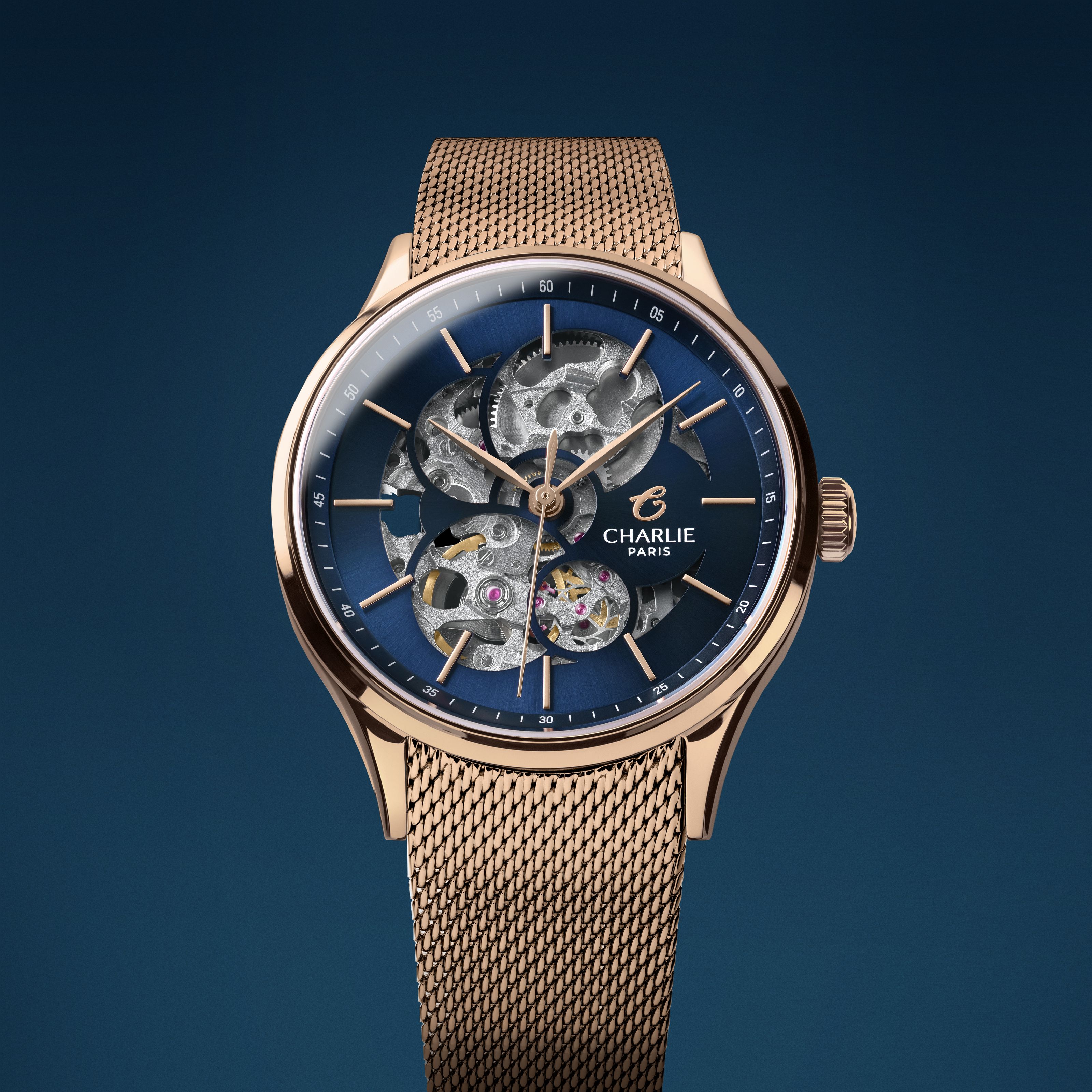If you have just purchased a Sully Moon Phase or would like to better understand how it works, don't worry: Team Charlie Paris has prepared a complete guide to help you learn how to set the moon, date, and time on your watch.
This elegant watch, featuring a poetic and rare complication, perfectly embodies French watchmaking expertise.

What is a moon phase watch?
The moon phase is one of the most fascinating complications in watchmaking. It indicates the different phases of the lunar cycle on the dial: new moon, first quarter, full moon, and last quarter.
On the Sully Moon Phase, this function is represented in the lower part of the dial, offering a dimension that is at once technical, poetic and refined to your watch.
Setting your Sully Moon Phase
Before any manipulation, it is important to respect the following adjustment order:
- First the Moon, then the date, and finally the time.
This method ensures the proper functioning of the mechanism and preserves the accuracy of your watch.
Moon Setting
- Pull the crown out to position 2.
- Turn the crown as if to set the time. The moon will advance one notch every 24 hours (there is no quick correction).
- Press the crown back to position 0 once the correct moon phase is obtained.

Concrete example of Moon adjustment:
To correctly set the moon, you need to know the current moon phase. Let's say it's October 14, 2025, check the current moon phase for today (e.g., on the lunar calendar above or an app). If it's October 14, 2025, and the last Full Moon was 7 days ago (October 7), you need to move forward 7 days from the Full Moon you just set.
From your Full Moon reference:
Pull the crown out to position 2, turn the crown to advance the hands. Each time you advance the time past midnight (or a full 24 hours), the Moon Phase advances one day.
If you need to advance 7 days to reach the phase of October 14, you will need to turn the crown the equivalent of 7 full days. Once the Moon Phase matches that of October 14, stop turning and return the crown to position 0.
This method ensures proper synchronization between the time and the lunar complication. You will then move on to setting the date.
Setting the date
Never change the date when the hour hand is between 9:30 p.m. and 1 a.m., as the automatic date change mechanism is then engaged.
- Pull the crown out to position 1.
- Turn the crown until the correct date is displayed.
- Return the crown to position 0 to finalize the setting.
Setting the time
- Pull the crown out to position 2.
- Turn it to set the desired time, respecting the 24-hour time cycle for a smooth date change.
- Press the crown back to position 0 and make sure it is securely engaged, this ensures the water resistance of your watch.
Care and use instructions
To preserve the beauty and precision of your Sully Moon Phase, here are some good practices to adopt on a daily basis:
- Do not adjust your watch while it is on your wrist to avoid bending the crown stem.
- Avoid shocks and strong temperature variations, which may affect the movement or water resistance.
The Sully Moon Phase is more than just a watch: it's a tribute to time and the beauty of the night sky.
With this guide, you now know how to accurately set the moon, date and time on your watch, while respecting good practices to preserve its mechanism.
And to help you visually, here is an excerpt from the user manual illustrating the different positions of the crown and the display of the moon phases.

Read more
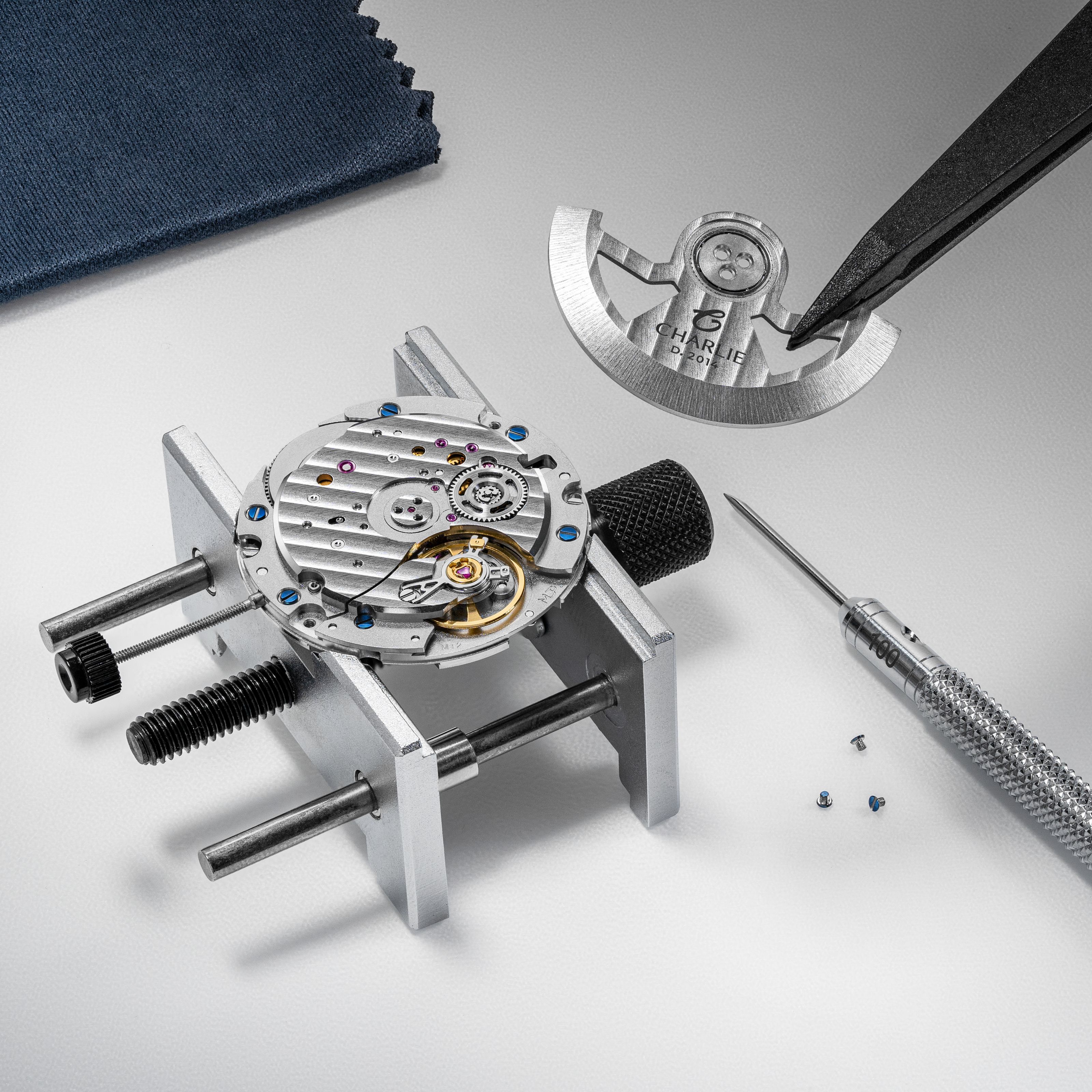
The transmission is the invisible network that transforms the barrel's energy into precise movement, making the balance wheel beat and the hands turn. At Charlie Paris, each wheel and mobile is me...
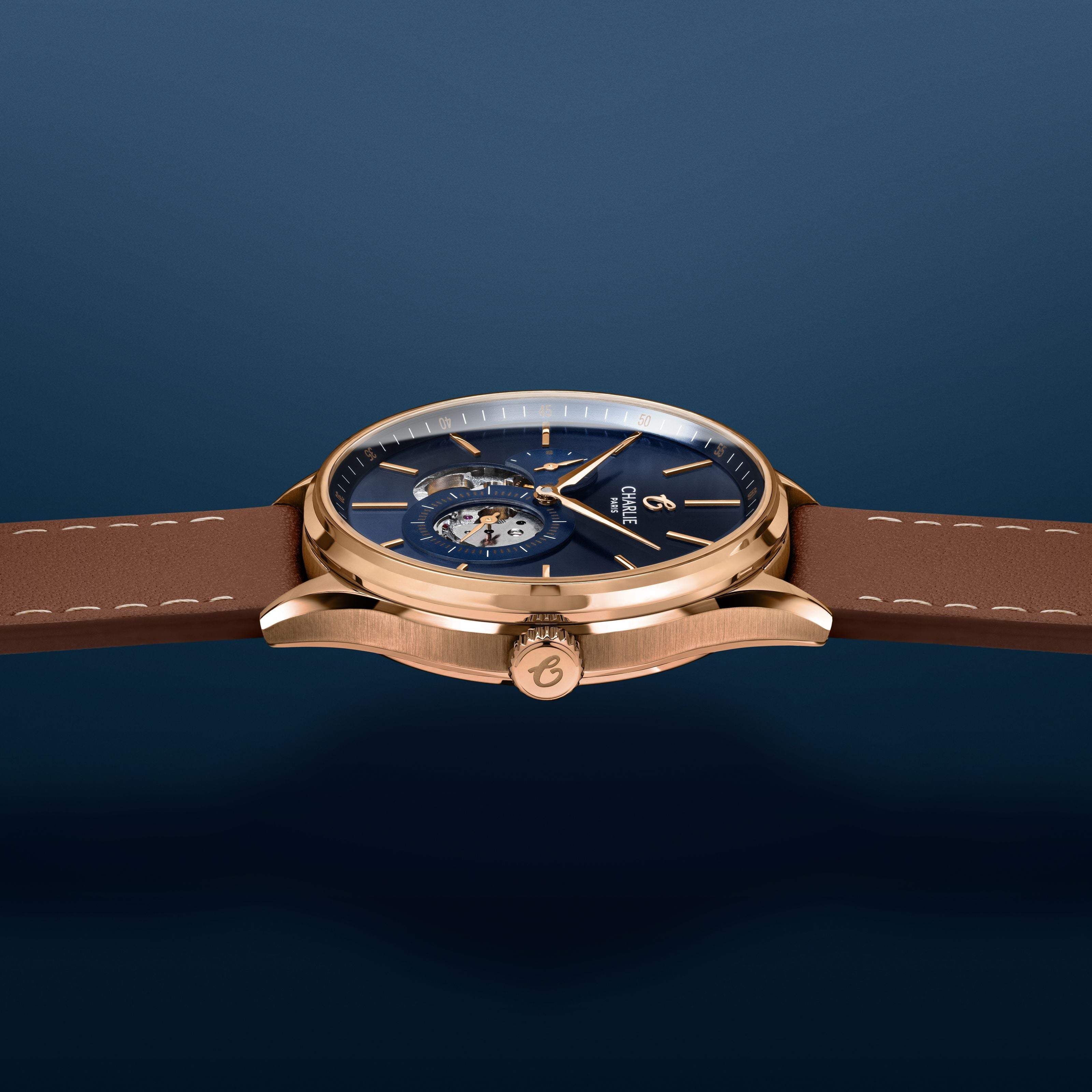
If the time change has become a standard, it is questioned for several years by governments and should be abandoned in Europe in 2021.


